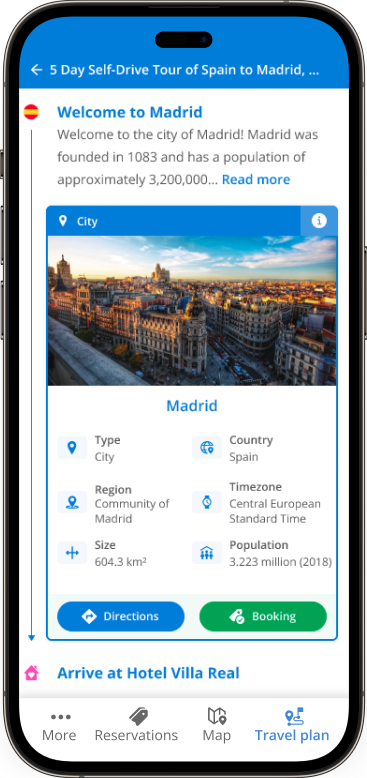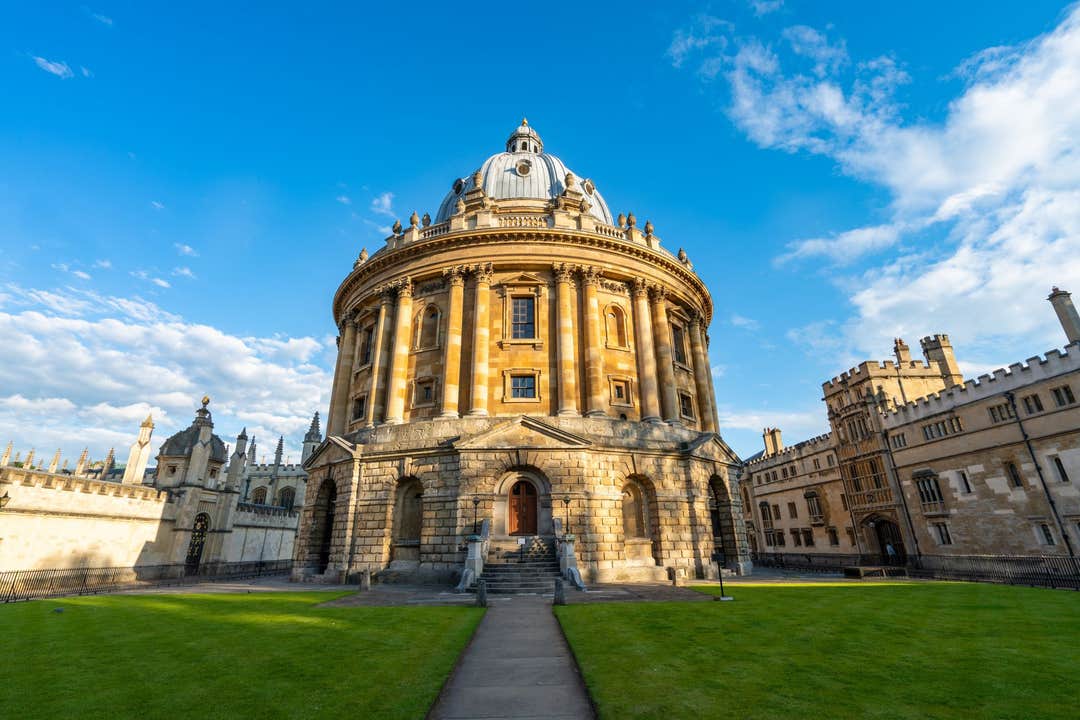
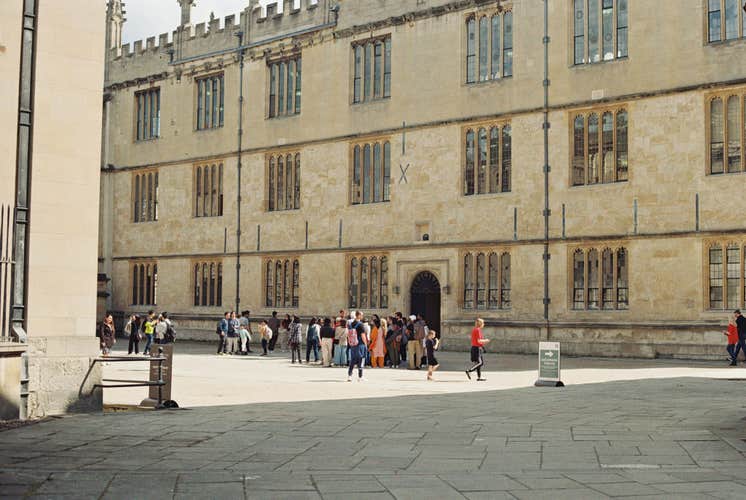
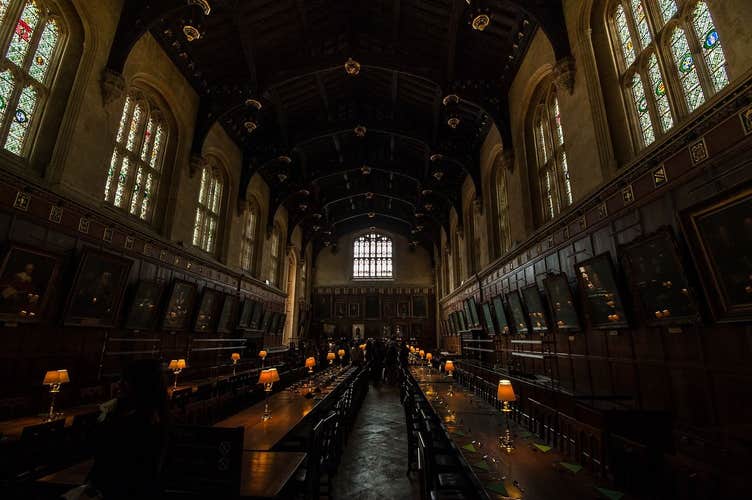
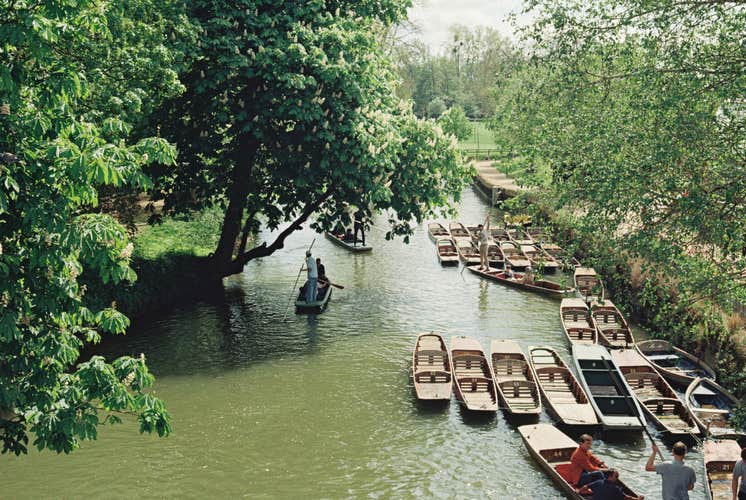
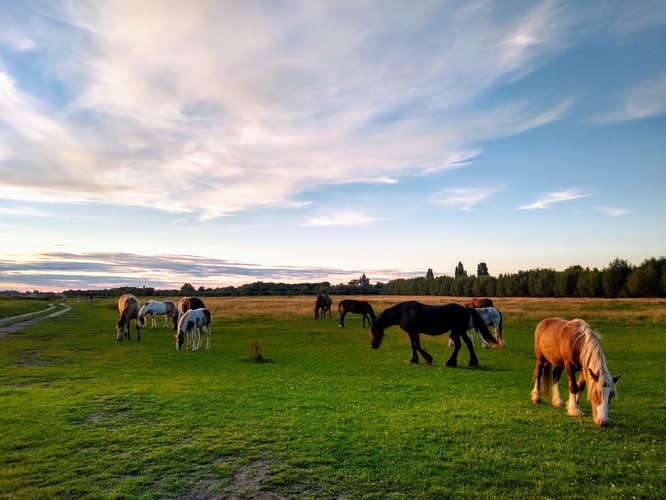
Go beyond textbooks by experiencing the top things to do in Oxford, England. Discover secret corners of the Bodleian Library's maze-like halls (without getting lost) and try punting like a true local. Get ready to explore Oxford in ways that no syllabus can teach you.
Oxford isn't all gowns and Latin mottos. It's the kind of place where you might bump into a professor in full robes, then stumble upon unicorn graffiti on a side street. Beyond the spires and student bikes, the top experiences in Oxford reveal surprising corners, historic eccentricities, and more green space than you'd expect.
Think gardens with secrets, museums with mummies, and cows that graze like they own the place. Oxford knows how to impress and surprise visitors if you know where to look.
Follow this guide to explore the best things to do in Oxford, stitched together with history, character, and a touch of mischief. By the end, you might decide Oxford deserves more than a day trip. Don't be surprised if you're already browsing travel packages to Oxford before you finish reading!
Essential Facts About Oxford's Best Experiences

Oxford packs a lot into a small space. Here are essential facts and insider tips to help you enjoy the city's best experiences with ease.
- Oxford's compact city center is easy to explore on foot. Major attractions, such as the Bodleian Library, the Radcliffe Camera, and several colleges, are all within walking distance.
- Punting on the River Cherwell is a popular activity best done from April to September; you can choose to punt yourself or join guided tours.
- Advance booking is essential for many college visits and guided tours to guarantee entry, as these popular experiences can fill up quickly, particularly during weekends and holidays.
- Oxford is well-served by frequent bus routes, including direct services to London's city center and major train stations such as Oxford Parkway and Oxford Station.
- The city offers diverse dining options, including restaurants with vegan, vegetarian, and gluten-free menus. Allergen information is usually clearly marked.
Top Oxford Tour Types: Must-Do Walking, Literary, and Water Activities
Oxford's guided tours aren't just popular; they're practically a rite of passage for visitors.
At the top of the list are Oxford city and university walking tours, which take you through historic colleges like Christ Church and Magdalen while unpacking centuries of tradition, architecture, and academic legends. Many are led by former students, which adds an extra layer of authenticity.
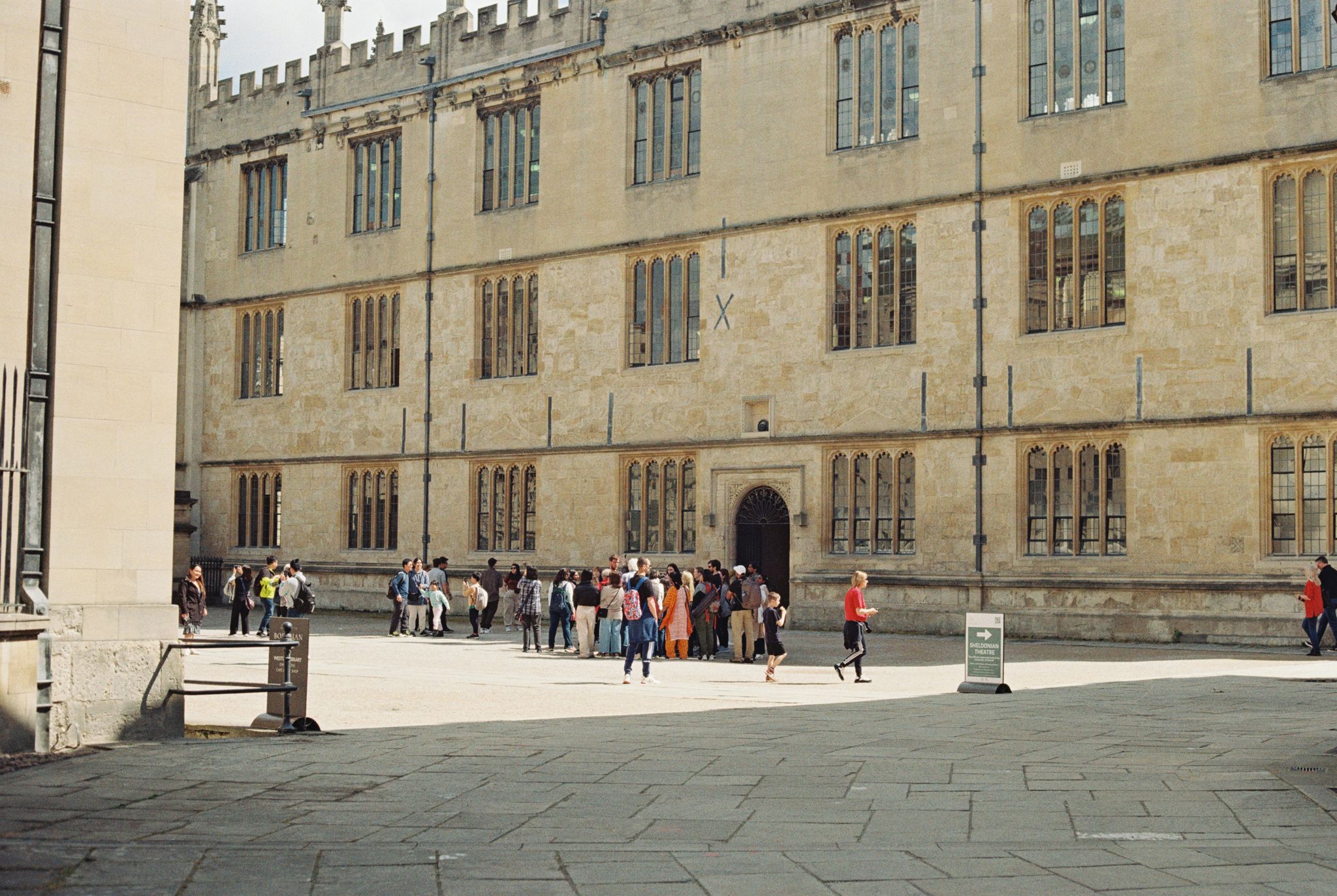
Harry Potter tours in Oxford are another favorite. These tours guide fans through real-life filming locations like the Bodleian Library and New College cloisters.
If you're more into literature than wizardry, Oxford's top literary tours shine a light on the lives of writers like J.R.R. Tolkien, C.S. Lewis, and Lewis Carroll. Many tours include stops at the pubs and gardens that influenced their work.
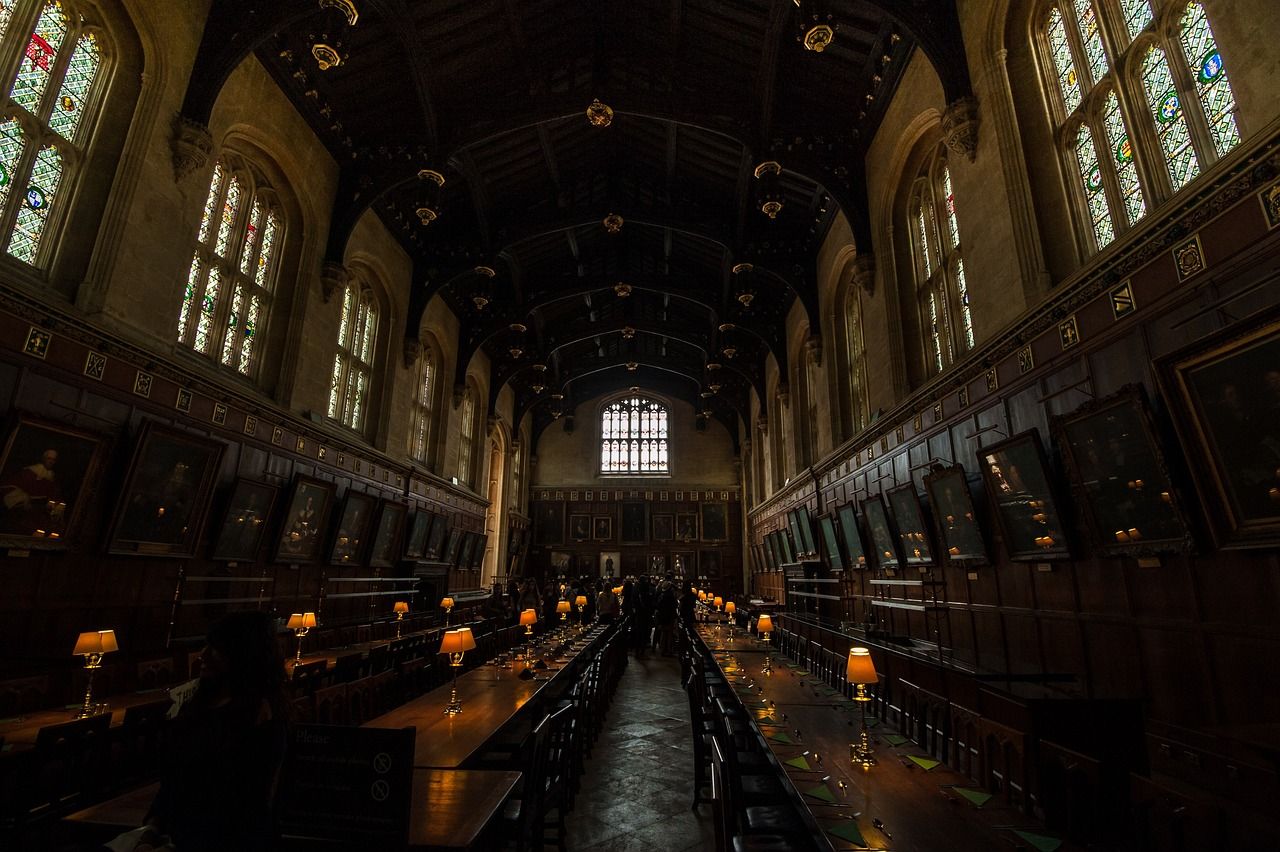
Fans of British television can follow in the footsteps of fictional detectives on popular TV-themed experiences in Oxford. You'll visit filming locations from "Inspector Morse" and "Endeavour," complete with behind-the-scenes stories.
For a slower pace, Oxford's punting tours and sightseeing cruises offer a scenic way to see the city from the water.
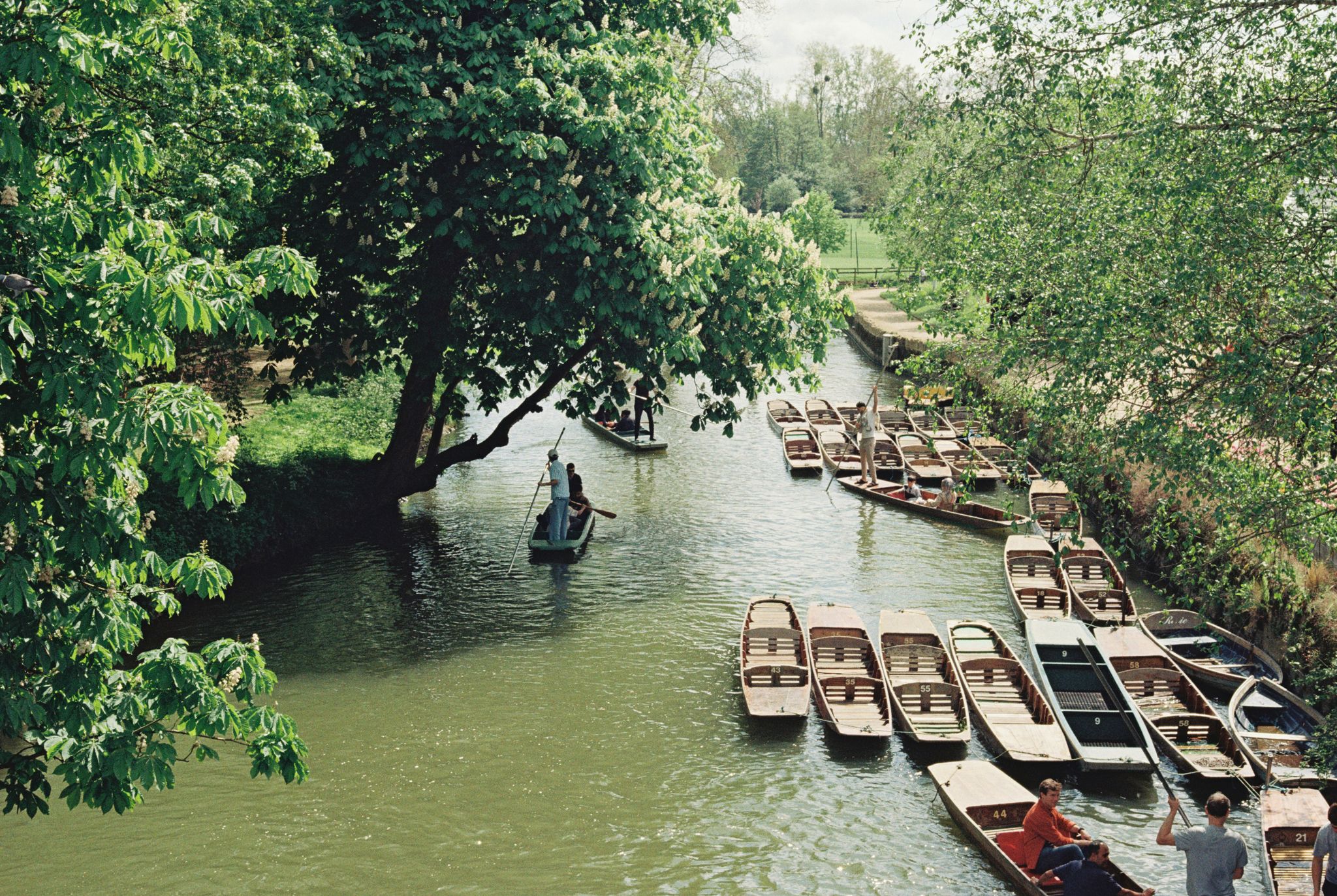
As evening falls, ghost tours in Oxford bring out the city's haunted side, mixing eerie stories with real local history. And if you prefer to cover more ground, Oxford bike tours offer a fun and breezy way to explore both the city and its green edges.
These experiences highlight Oxford's unique character and prepare you for the top activities that make the city so memorable. Read on to uncover the highlights of Oxford you won't want to miss.
15 Best Things To Do in Oxford
From ancient colleges to vibrant street scenes, Oxford's a playground for curious minds and adventurous souls. Here's your cheat sheet to the best things to see and do in Oxford.
15. Wander Through Port Meadow
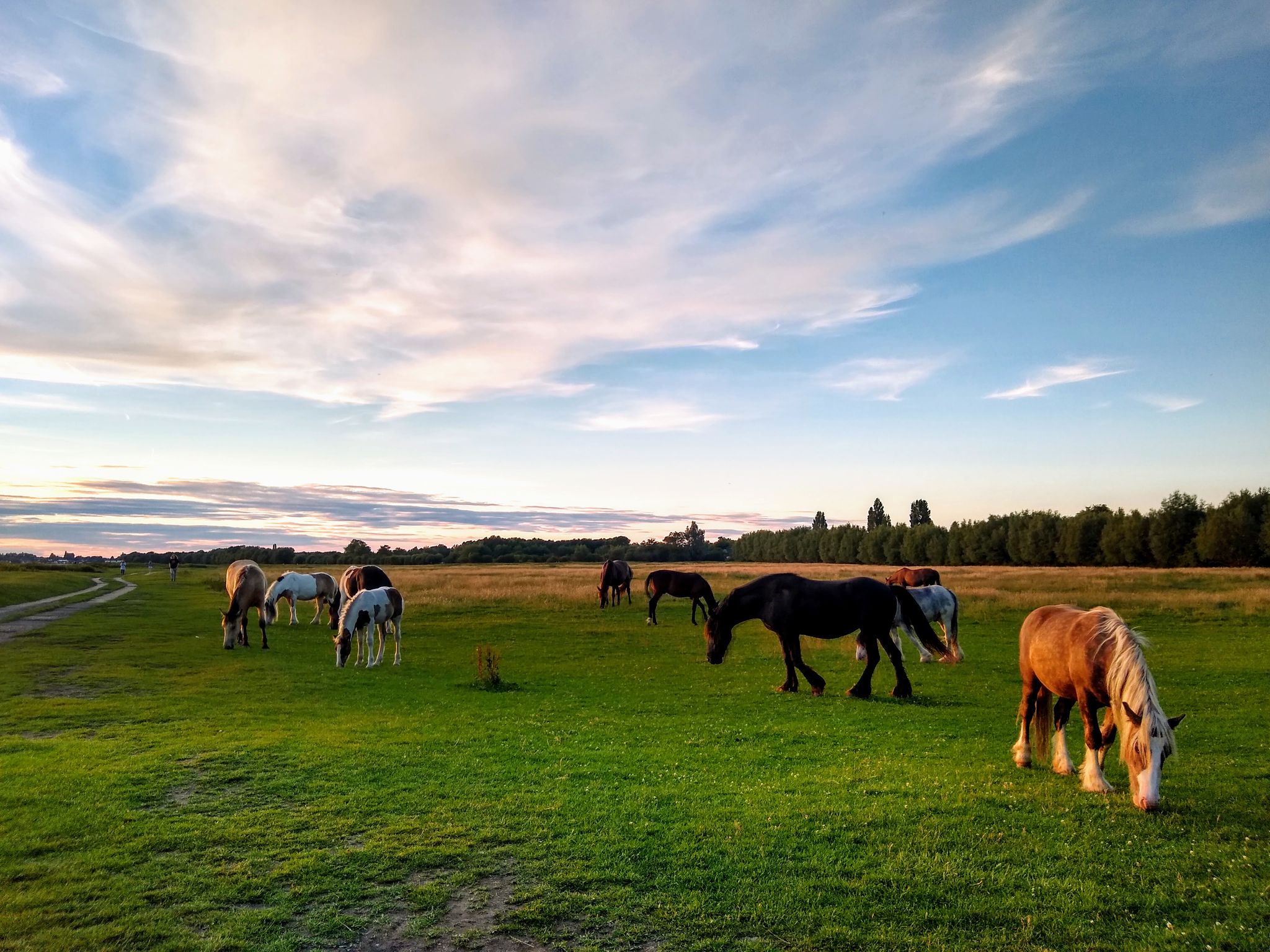
Just a stone's throw from Oxford's historic center lies Port Meadow, a vast stretch of ancient common land that has remained largely untouched for over a thousand years. Horses and cattle still roam freely across its open fields beside the gentle flow of the River Thames, where you can enjoy a scenic sightseeing cruise.
Port Meadow is a favorite for dog walkers, cyclists, and anyone looking to soak up nature without leaving the city behind. Seasonal events like traditional horse fairs add a splash of color and history to the landscape, making the meadow as lively as it is peaceful.
Tip: Wander up the west side of the meadow and you'll stumble across a 17th-century riverside pub. Keep following the Thames and you'll reach another historic watering hole further up. Along the way, look out for signs of Oxford's ancient past. Archaeological remains near the meadow trace back to the Bronze Age and Roman times.
14. Explore the Covered Market
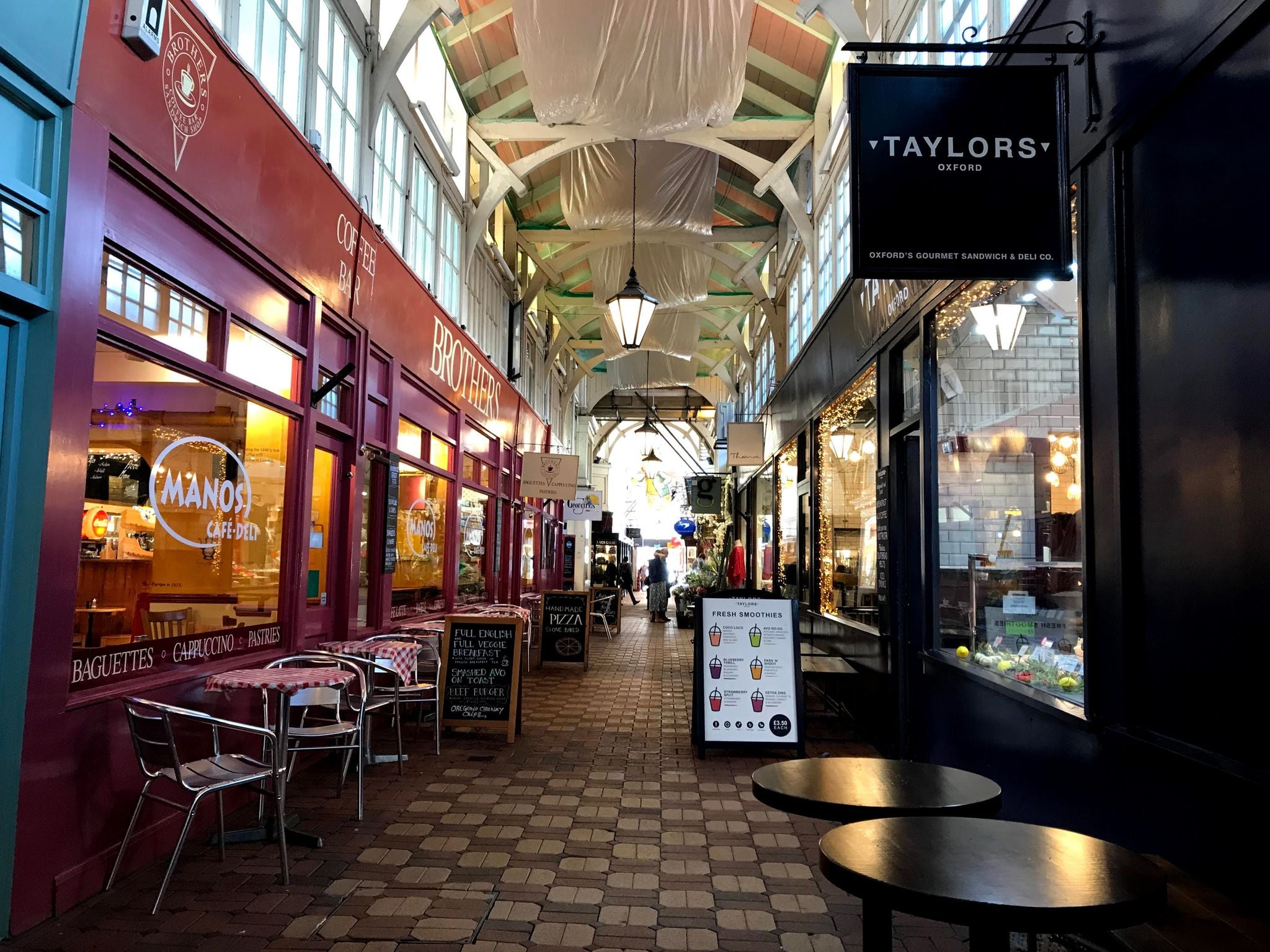
Image by Julian, CC BY-SA 4.0, Source
Tucked between the High Street and Cornmarket, Oxford's Covered Market has been feeding the city since 1774. Originally built to tidy up the overflowing street stalls, it's now a maze of colorful arcades filled with local flavors, handmade crafts, and time-honored institutions.
At the Covered Market, you'll find everything from butchers and bakers to florists, chocolatiers, and the famous Oxford sausage. Some traders have been here for generations, and their stories are as much a part of the experience as the goods they sell.

To explore the market's background, watch this historical video featuring local historian Malcolm Graham.
Tip: You can browse stall maps, check opening hours, and see who's selling what on the official Covered Market website. It's especially handy if you're hunting down a specific treat or want to catch one of the seasonal pop-up events.
13. Visit the Oxford Botanic Garden
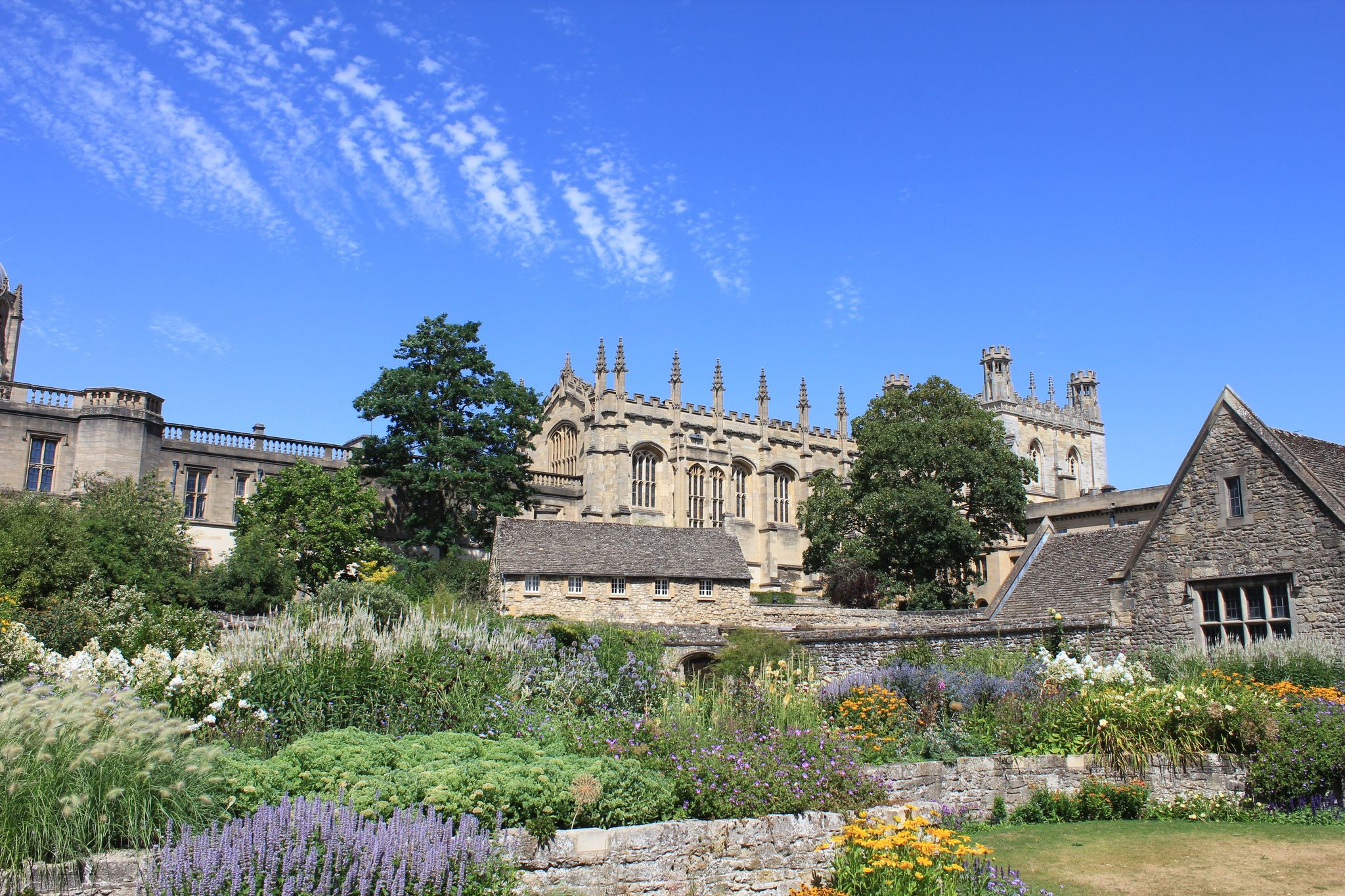
The Oxford Botanic Garden is Britain's oldest, founded in 1621 as a physic garden for medicinal plants. Today it holds over 5,000 plant species within just 1.8 hectares, making it one of the most densely packed and diverse plant collections in the world.
You can wander through tropical glasshouses, stroll along riverside borders, and explore beds that showcase centuries of botanical research. A Botanic Garden entry ticket gives you access to everything, including seasonal exhibitions and guided trails.
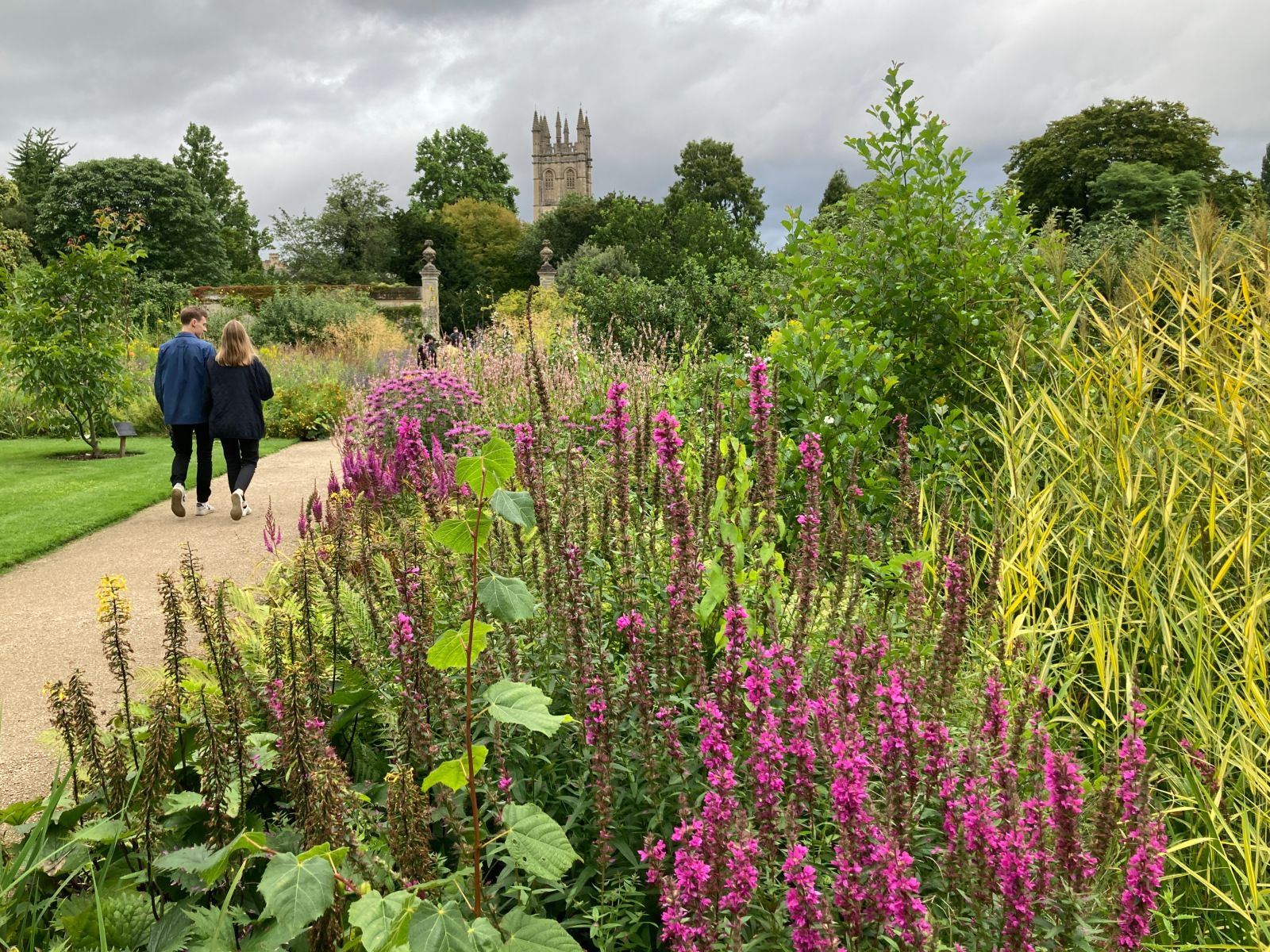
Beyond its scientific roots, the garden has long inspired literary greats. Lewis Carroll visited often with the Liddell family, and parts of “Alice's Adventures in Wonderland” may have taken root among the garden's more curious specimens. J.R.R. Tolkien was known to find peace here too during his years in Oxford.
Tip: Benches are scattered throughout the grounds, so pack a picnic if the weather allows. From spring through autumn, a small riverside cafe sells drinks and snacks with a peaceful garden view.
12. Take a Stroll in Christ Church Meadow
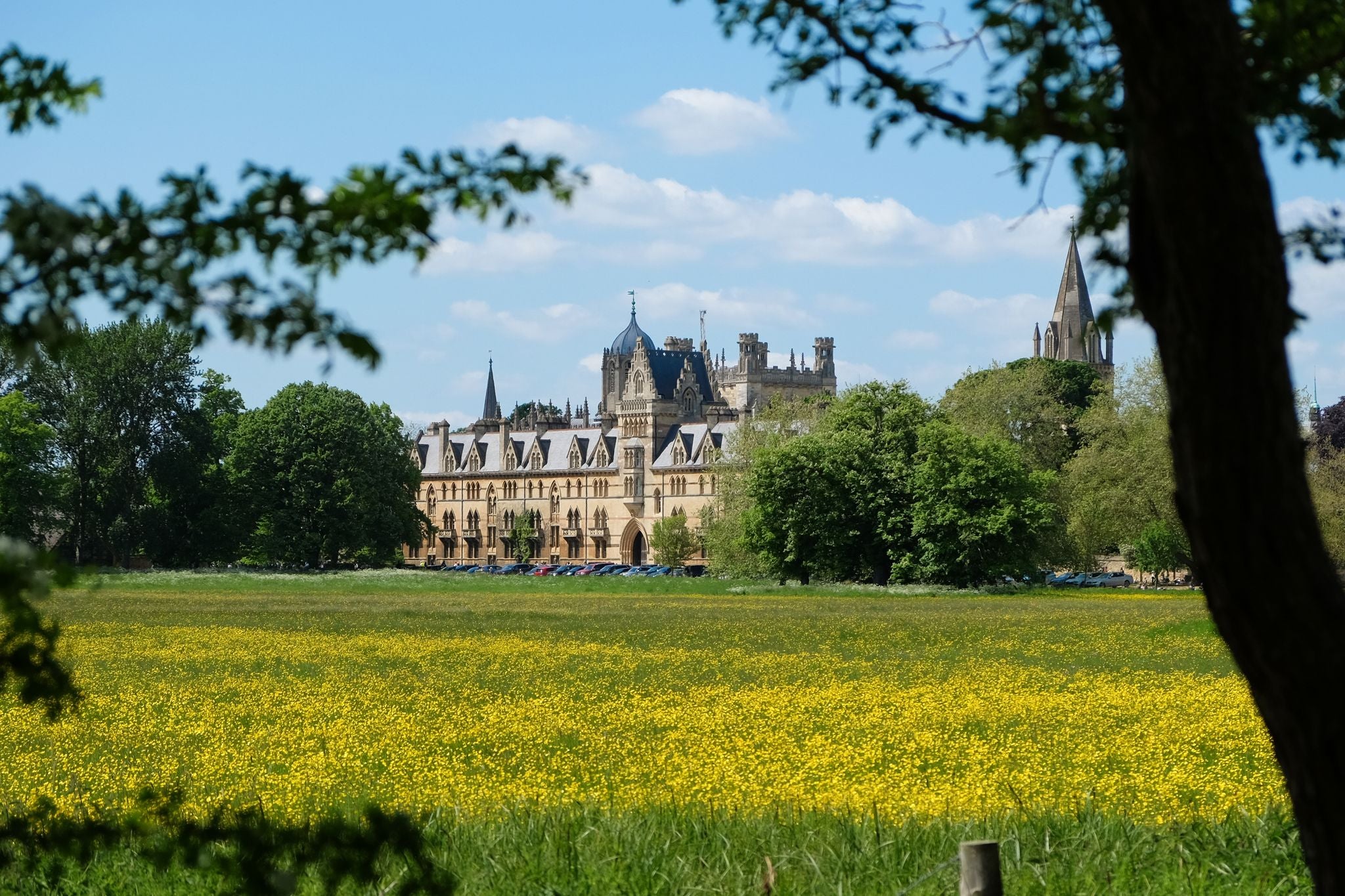
Christ Church Meadow offers an open stretch of green just a short walk from Oxford's busiest streets. The paths follow the rivers Thames and Cherwell, with wide views of grazing cows and college buildings rising beyond the trees. It's a quiet spot where locals walk dogs, rowers practice, and visitors can take a moment away from the city buzz.
Taking a stroll through Christ Church Meadow is among the best free things to do in Oxford if you want to see the city slow down. There's no set route. Just follow the path, listen to the oars hitting the river, and see where it takes you.
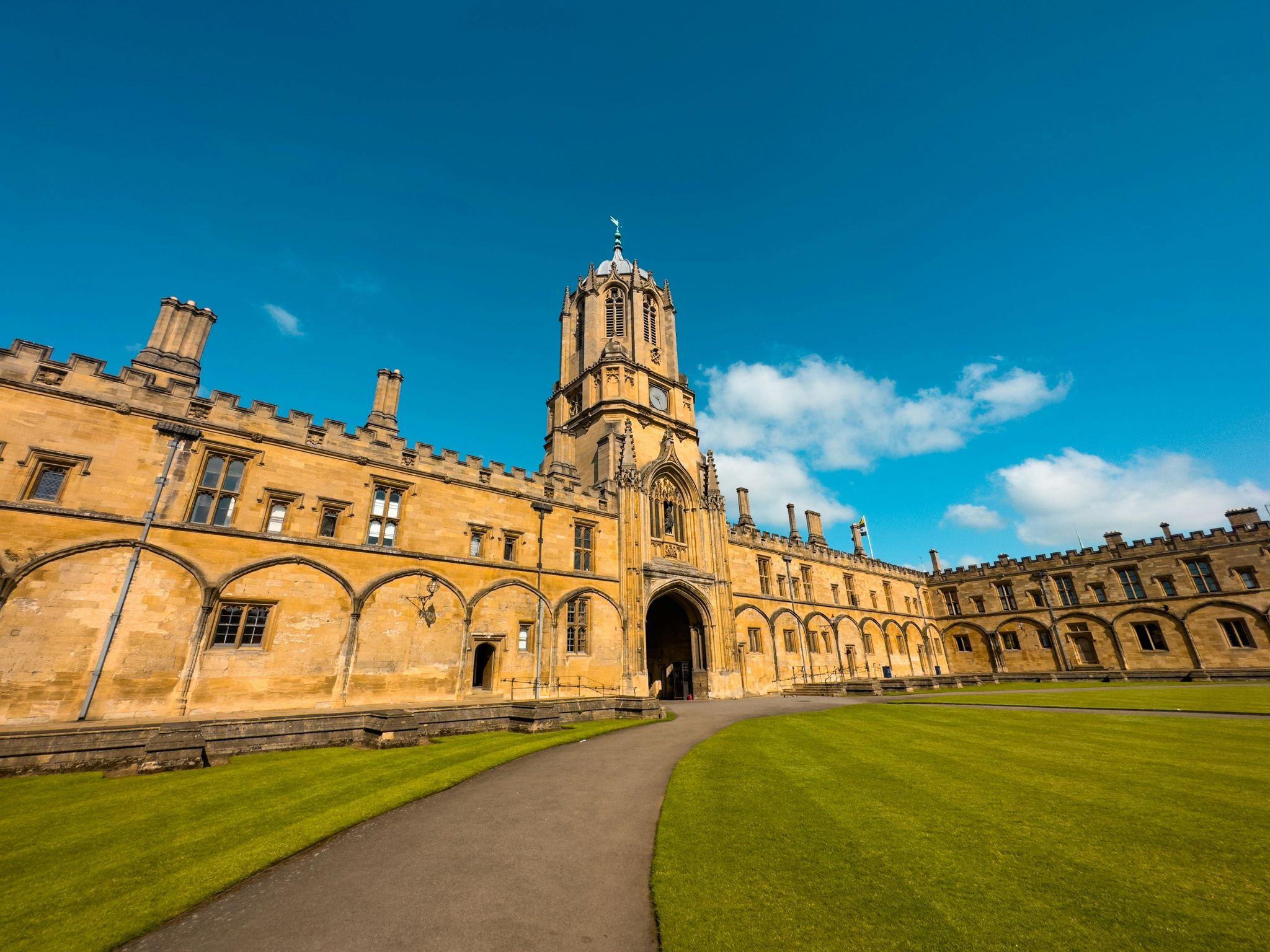
If you like your days a little more organized, a guided tour of Christ Church College is a perfect way to uncover the history and architecture nearby.
Trivia: Oxford's first balloon flight took off from Christ Church Meadow in 1784. Keep an eye out for the plaque marking this historic launch site as you stroll through the meadow.
11. Admire the Radcliffe Camera and the Bodleian Library
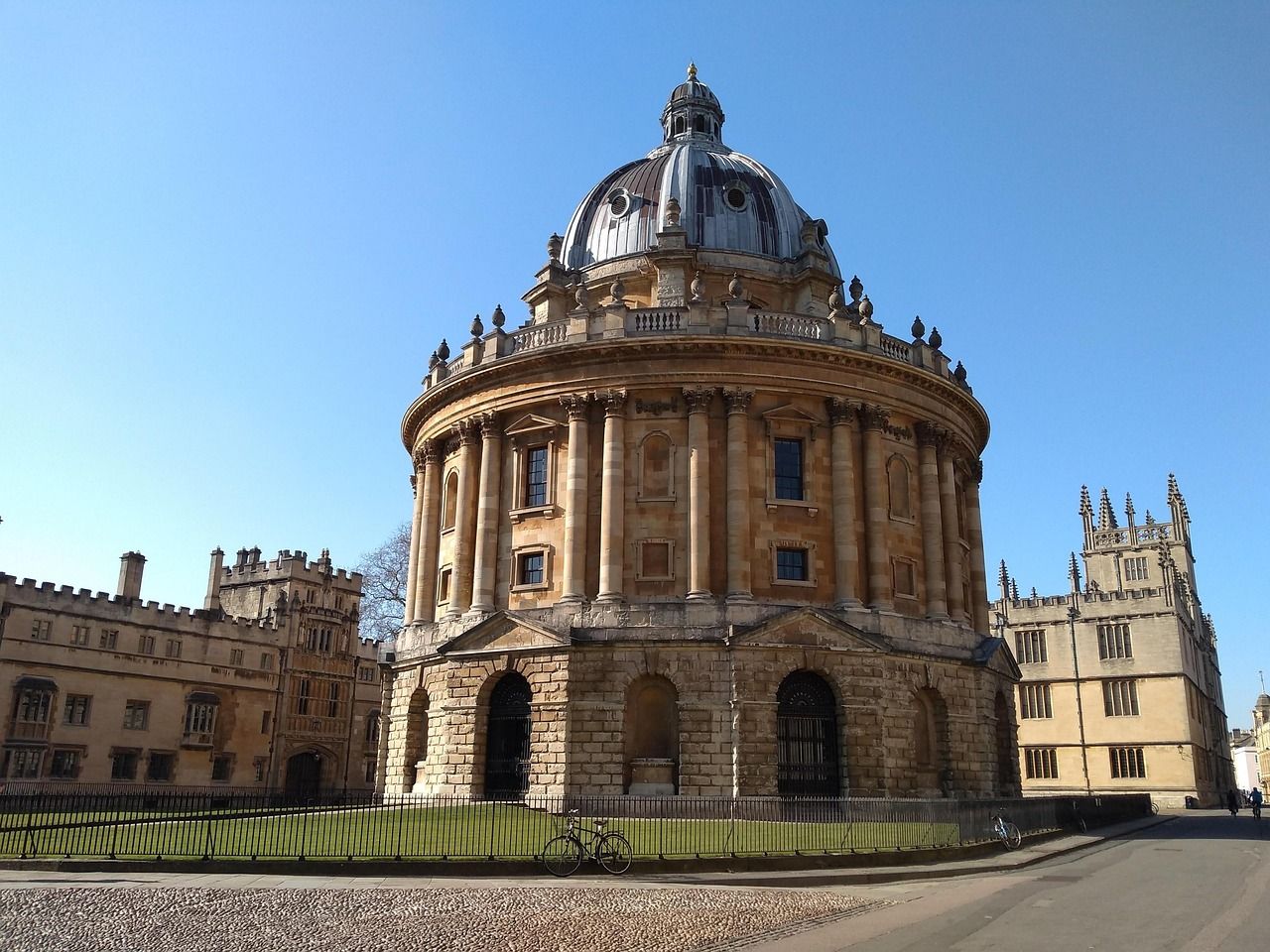
At the heart of Oxford's historic center stand two iconic landmarks: the Radcliffe Camera and the Bodleian Library.
The Radcliffe Camera's striking circular design draws the eye, making it one of the most photographed buildings in Oxford. The Bodleian Library, one of the oldest libraries in Europe, holds millions of manuscripts and rare books, some dating back centuries.
To explore its historic interiors, you'll need to join a tour, such as the Oxford University and City Walking Tour with an Alumni Guide. This experience takes you through some of its most beautiful rooms, including the medieval Divinity School and the atmospheric Duke Humfrey's Library, the oldest reading room in the Bodleian.

Tip: Photography is allowed in certain areas like the Divinity School and Duke Humfrey's Library, but always check with staff first.
10. Punt Along the Cherwell or Thames
Punting is a classic Oxford pastime, especially popular on sunny days. You can rent a flat-bottomed boat and give it a go yourself, or join a chauffeured punting tour and let students of Oxford do the navigating. Either way, it's one of the most relaxing and scenic ways to see the city from the water.
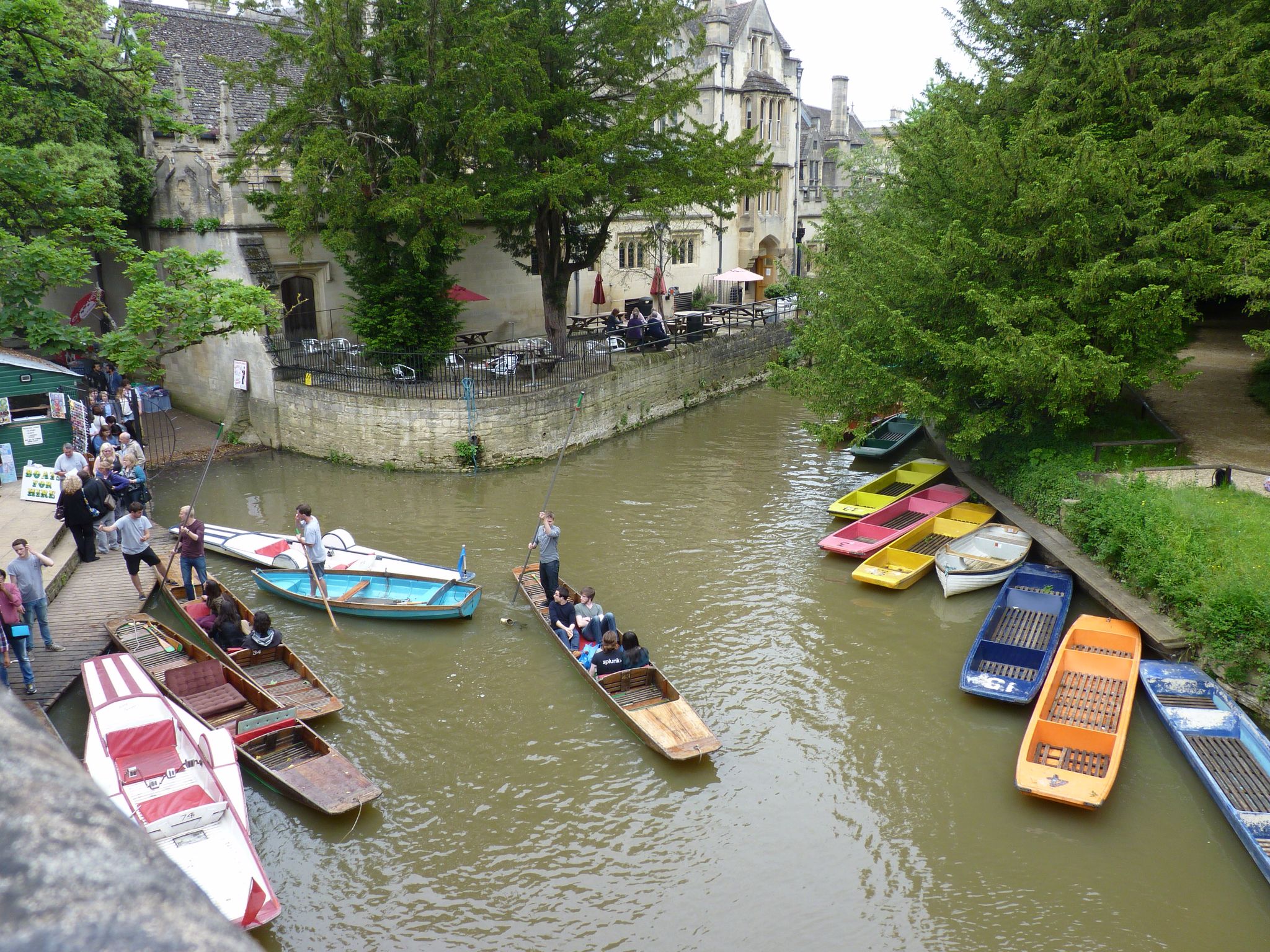
Image by Ruth Sharville, CC BY-SA 2.0, Source.
Punting on the Cherwell River is a gentler experience. Most boats set off from Magdalen Bridge or the Cherwell Boathouse, gliding past college gardens, shaded trees, and quiet backwaters. You can head upstream to a riverside pub or drift along at your own pace. It's quiet and green, with hardly a sign of the city beyond the trees.
The Thames has a bit more bustle. Boats usually depart from Folly Bridge, passing Christ Church Meadow or heading out toward the open space around Port Meadow. You might spot rowing crews in training or hear college bells echoing across the water. It's still a calm experience, just with a little more signs of Oxford life around you.
Trivia: In Oxford, the Thames is called the Isis. The name likely comes from the Latin word "Tamesis," with "Isis" taken from the middle. Locals and rowers still use the term today.
9. Discover the Ashmolean Museum
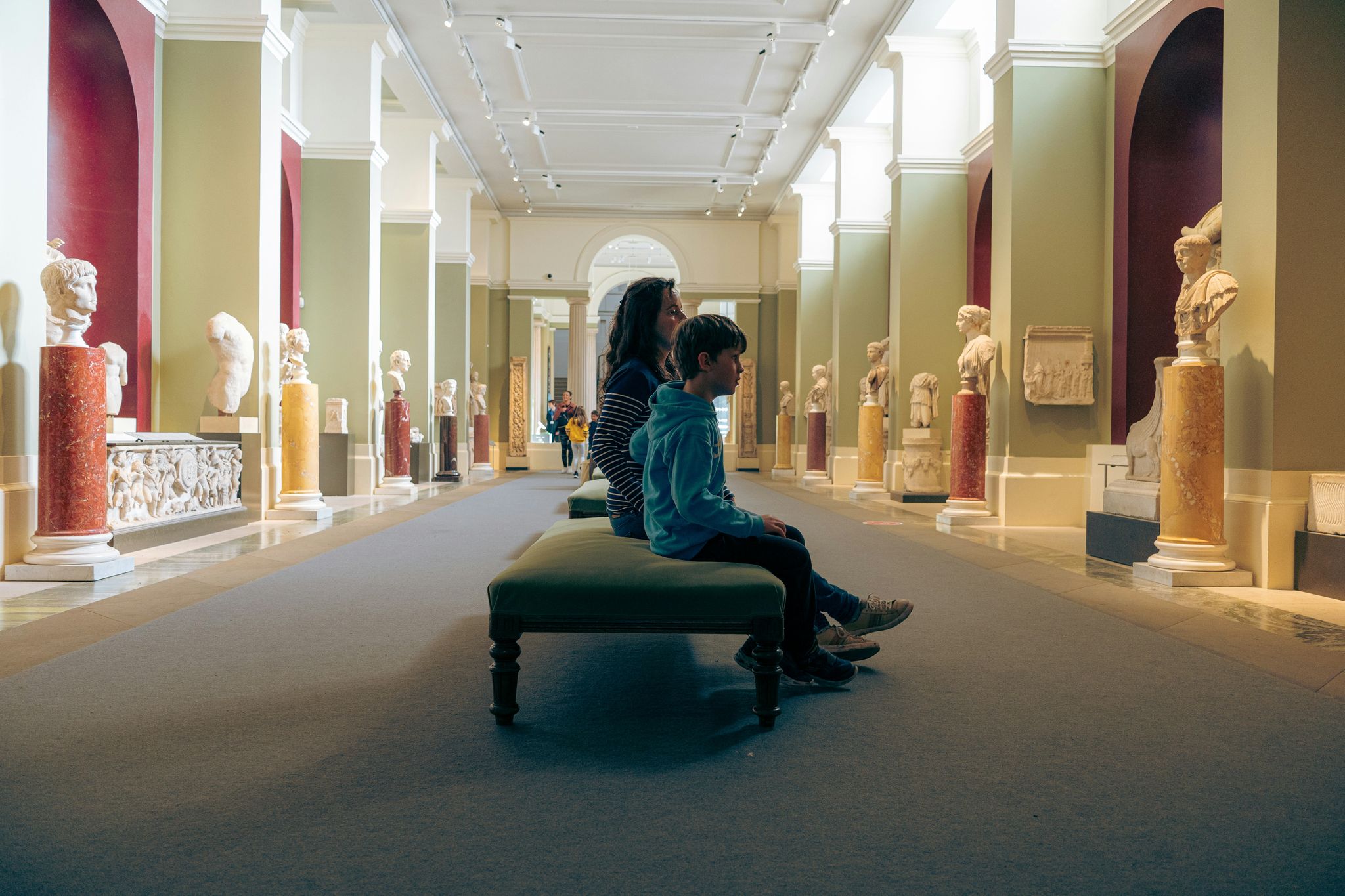
As Britain's oldest public museum, the Ashmolean has been a cornerstone of Oxford's cultural life since 1683. Its vast collections include ancient Egyptian artifacts, Renaissance paintings, and contemporary art, making it a treasure trove for history buffs and art lovers.
The museum is named after Elias Ashmole, whose 17th-century donation helped establish the collection. Today it houses over a million objects, including one of the world's earliest surviving musical instruments, an ancient lyre dating back more than 3,000 years.
The Ashmolean offers free entry, but some special exhibitions may require tickets. You can explore the galleries on your own or join a guided Ashmolean Museum tour led by university researchers.
Tip: Plan your visit around one of the museum's regular talks or family-friendly events that bring the collections to life. And don't miss the rooftop cafe, which offers one of the best views of Oxford's skyline.
8. Dive Into Oxford's Literary History
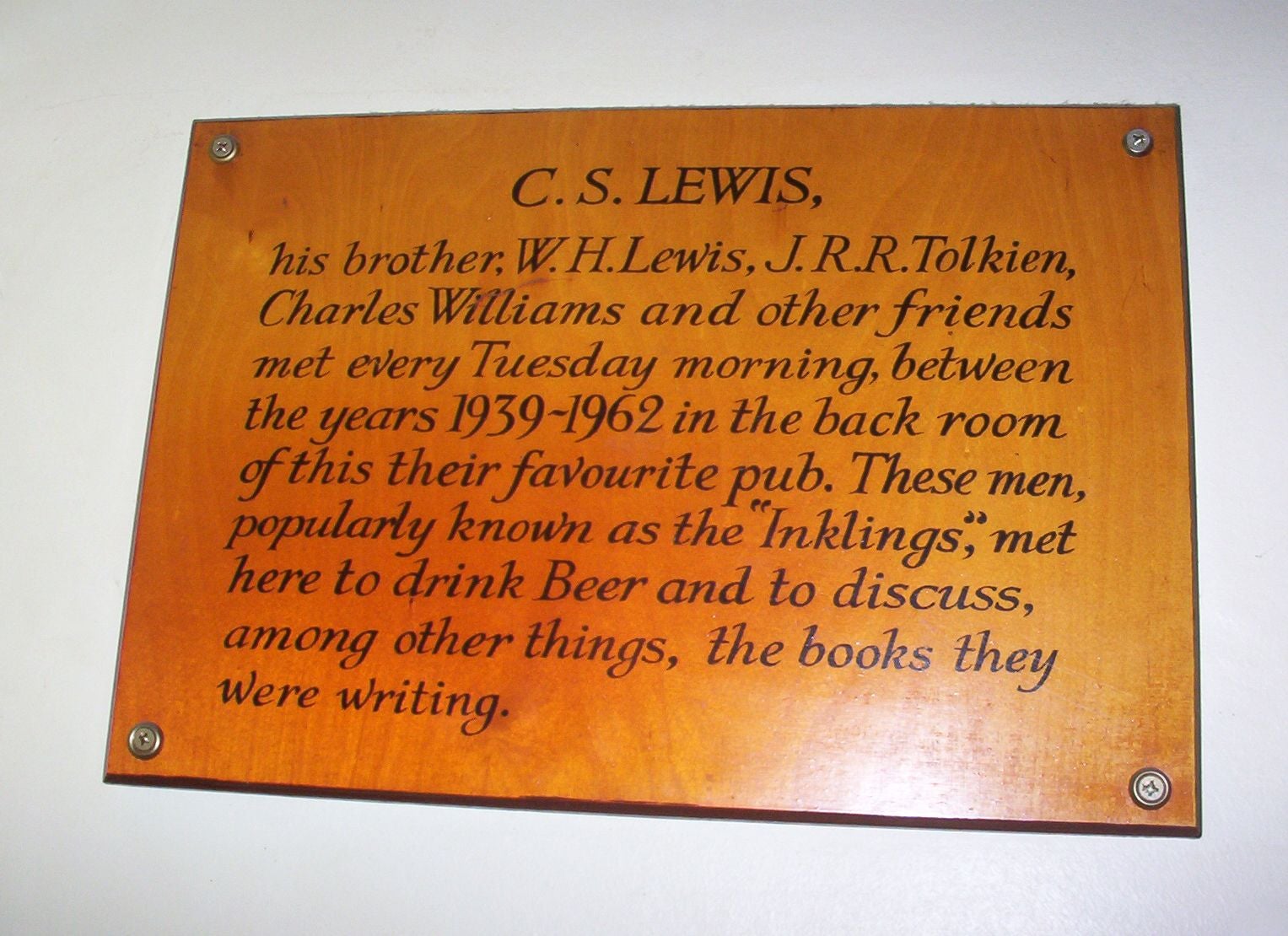
Oxford has inspired some of the world's most beloved writers-from J.R.R. Tolkien to C.S. Lewis and Lewis Carroll. You can visit iconic literary pubs like The Eagle and Child, where the Inklings met to share ideas and read their work aloud.
The Inklings were a tight-knit circle that included Tolkien and Lewis, who critiqued each other's work over pints and conversation. If you want to step into their world, try the Inklings private walking tour. A local guide will show you all the best spots where these famous writers hung out, worked, and found their inspiration.
Trivia: Oxford is also the setting for the famous “Inspector Morse” detective series by Colin Dexter. If you're a fan, you can visit the real-life locations featured in the Inspector Morse series throughout the city. It's a unique way to see Oxford through the eyes of one of its most famous fictional detectives.
7. Relax at the University Parks
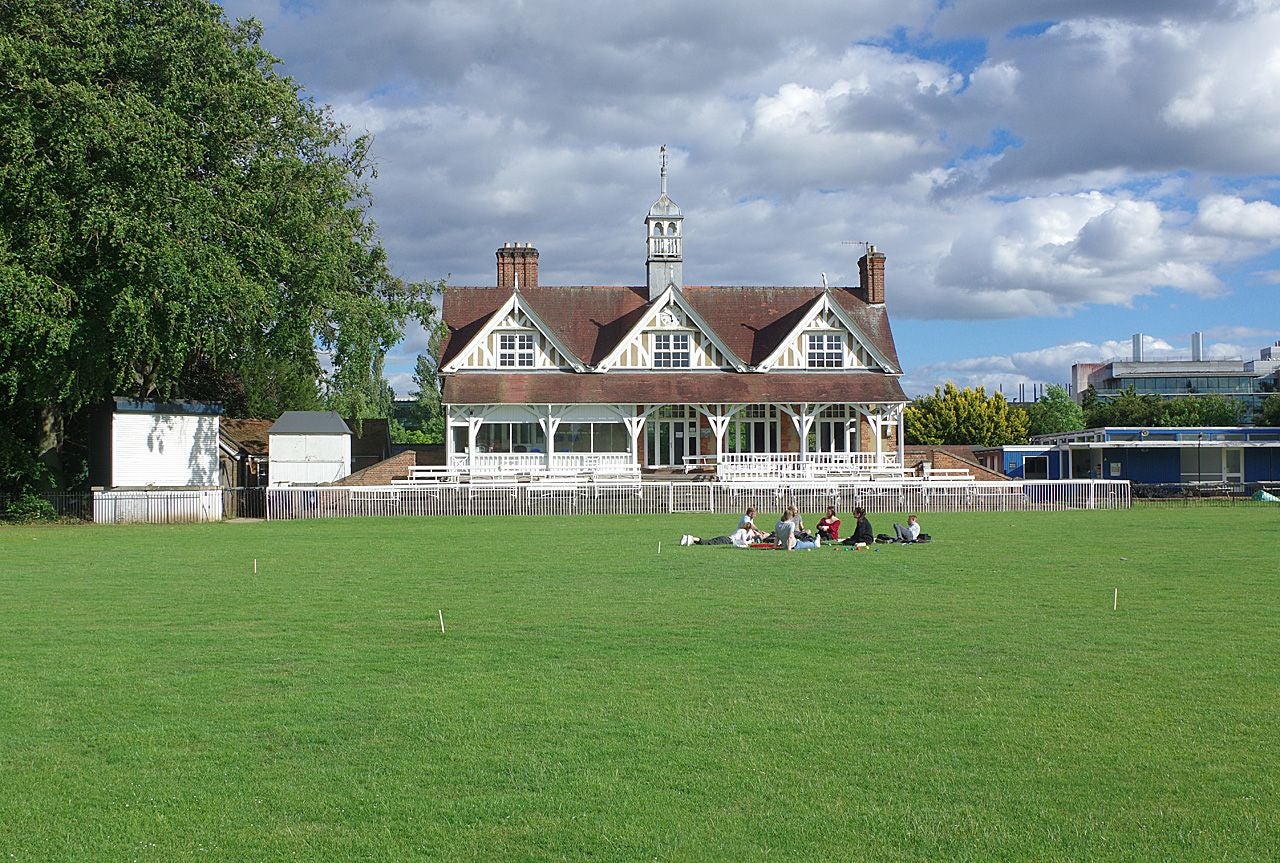
Image by Stephen McKay, CC BY-SA 2.0, Source.
Relaxing at the University Parks is one of the top free things to do in Oxford if you want to enjoy green space away from the city's busiest spots. Covering more than 70 acres, this peaceful park is popular with locals for jogging, picnics, and watching informal games of cricket or frisbee.
The well-maintained paths wind through gardens, open fields, and alongside the River Cherwell. It's a lovely place for a leisurely walk or a family day out. Wander along the river and you might spot swans, herons, or even kingfishers making their home here.
Tip: The cricket pavilion here is one of the oldest in the country, and you can often catch university matches on sunny afternoons. During summer, bring a frisbee or cricket ball to join locals playing casual games or check the schedule for occasional open-air concerts.
6. Hunt for Oxford's Quirky Shops

Image by Chris Denny, CC BY-SA 2.0, Source.
Oxford is not all spires and secondhand book stalls. If you want something a little different, head to Jericho or Cowley Road. These two neighborhoods are full of personality, with vintage shops, handmade crafts, and plenty of spots to grab a great coffee.
For things to do in Jericho, start with a stroll down Walton Street. This charming area feels like a village of its own, full of Victorian terraces, indie boutiques, and cozy cafes. On sunny days, the nearby Oxford Canal offers a peaceful place for a walk.
Film lovers should make time for the Phoenix Picturehouse. It's one of the oldest cinemas in the UK and screens everything from cult classics to indie hits.
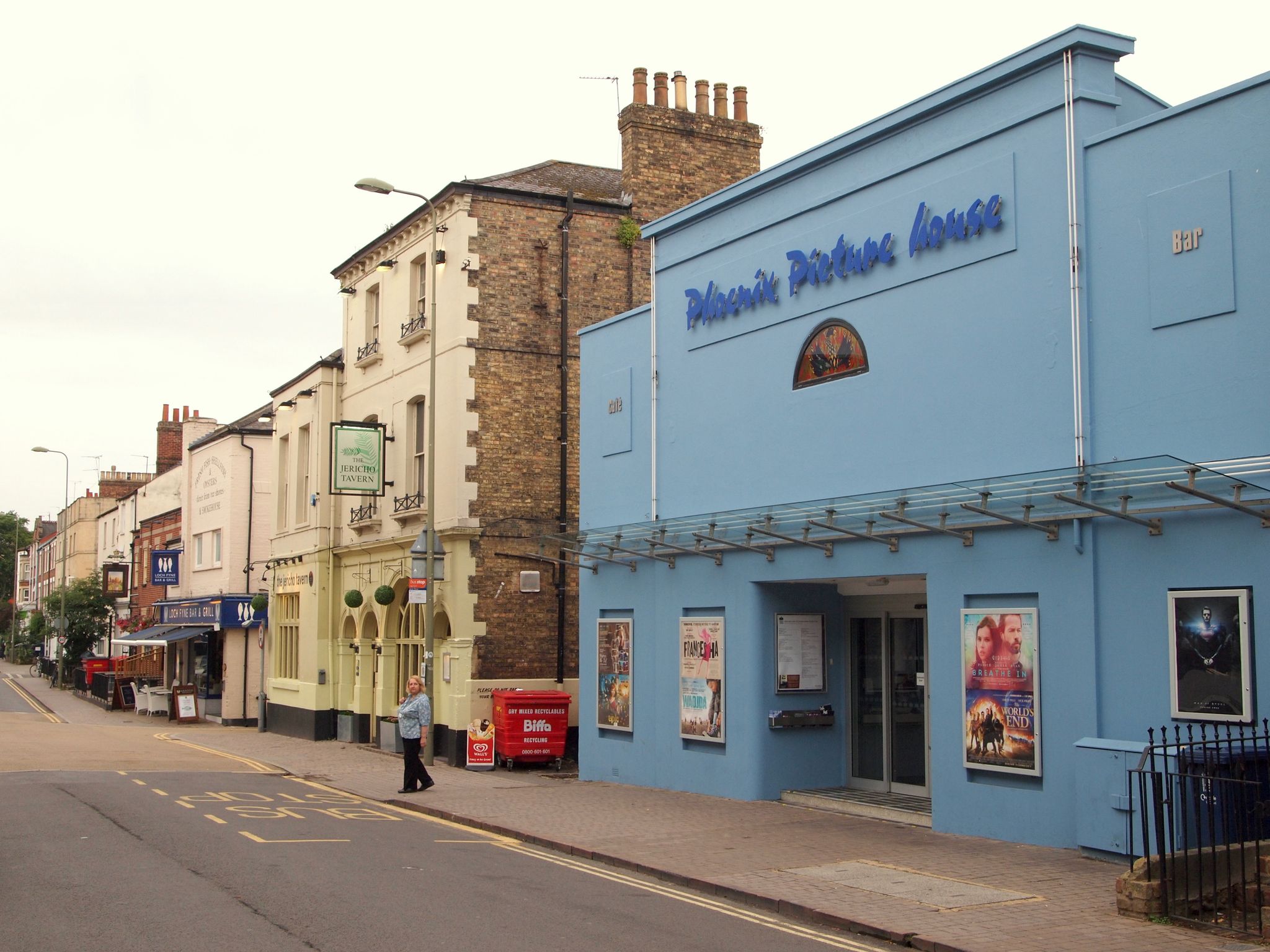
Image by David Hallam-Jones, CC BY-SA 2.0, Source.
If you're planning to visit Cowley Road, Oxford, expect a livelier vibe. Known for its bold street art and international food scene, it's a great place to sample everything from Lebanese wraps to Thai curries.
Vintage fans can spend hours browsing charity shops and the enormous Oxfam Superstore. Cowley Road is also one of the best Oxford neighborhoods for live music, with venues like the O2 Academy hosting gigs almost every night.
Trivia: Jericho was once Oxford's bohemian quarter and inspired parts of Philip Pullman's “His Dark Materials,” where it appears as the Gyptians' riverside home. In 2006, Cowley Road even had its own local currency called the East Oxford Pound, created to support independent businesses.
5. Catch a Show at the Oxford Playhouse
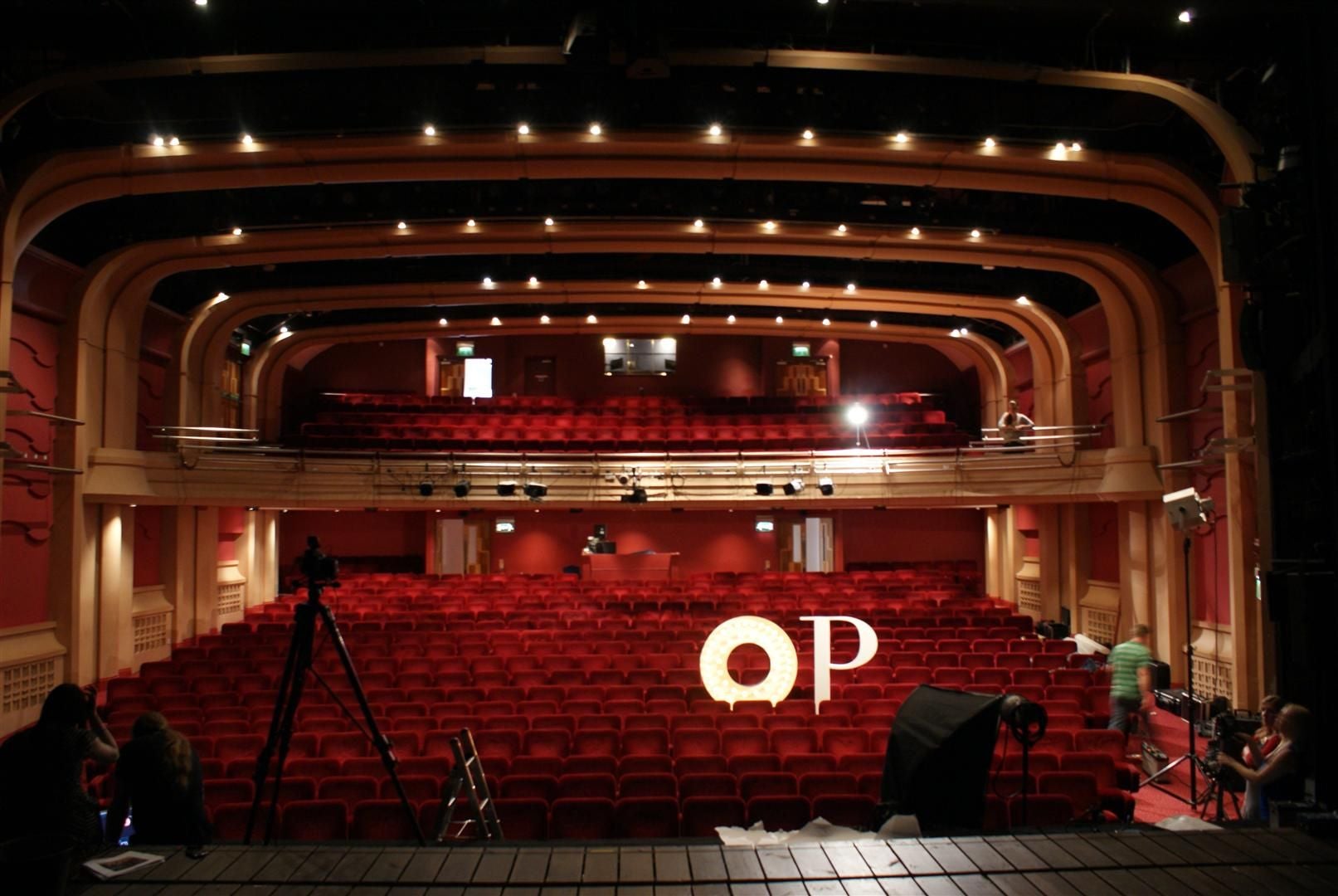
Image by OxfordPlayhouse, CC BY-SA 3.0, Source.
The Oxford Playhouse is a must-visit cultural hotspot offering a fantastic mix of gripping plays, clever comedies, and live music right in the heart of the city. Since opening its doors in 1938, this intimate theater has become a favorite among locals and visitors who seek high-quality performances in Oxford.
With its close-up setting, the Playhouse makes every show feel special. It also hosts festivals and special events throughout the year, keeping Oxford's arts scene vibrant and lively.
Trivia: The theater has been a key stepping stone for many British actors over the decades. The legendary actor and director Kenneth Branagh once performed here early in his career.
4. Walk Along the High Street
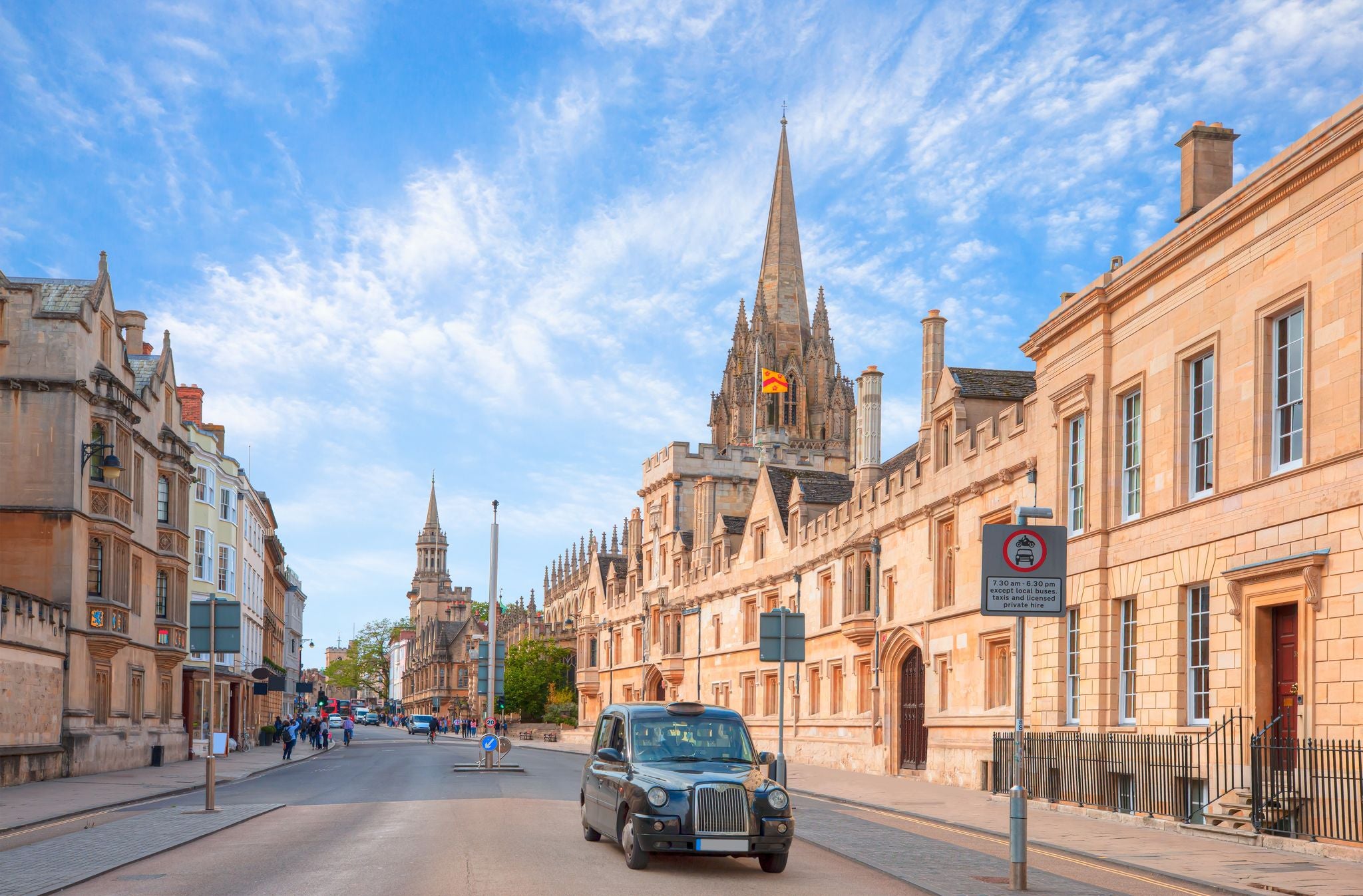
Oxford's High Street is more than just a road through the city. It is one of the best places to experience Oxford's history and daily life at the same time. Lined with honey-colored buildings, old colleges, and small local shops, it's ideal for a leisurely walk or a spontaneous cafe stop.
Along the way, you'll pass landmarks like the Sheldonian Theatre and the University Church of St Mary the Virgin. From the side streets, you might even catch a glimpse of the dome of the Radcliffe Camera. Look out for independent bookstores, vintage shops, and traditional pubs that have stood here for centuries.
Trivia: The High Street has been Oxford's main route for more than 800 years. In the Middle Ages, it was part of an important trade road between London and the west of England. It's still known locally as "The High" and is considered one of the most beautiful streets in the country.
3. Visit Magdalen College and Deer Park
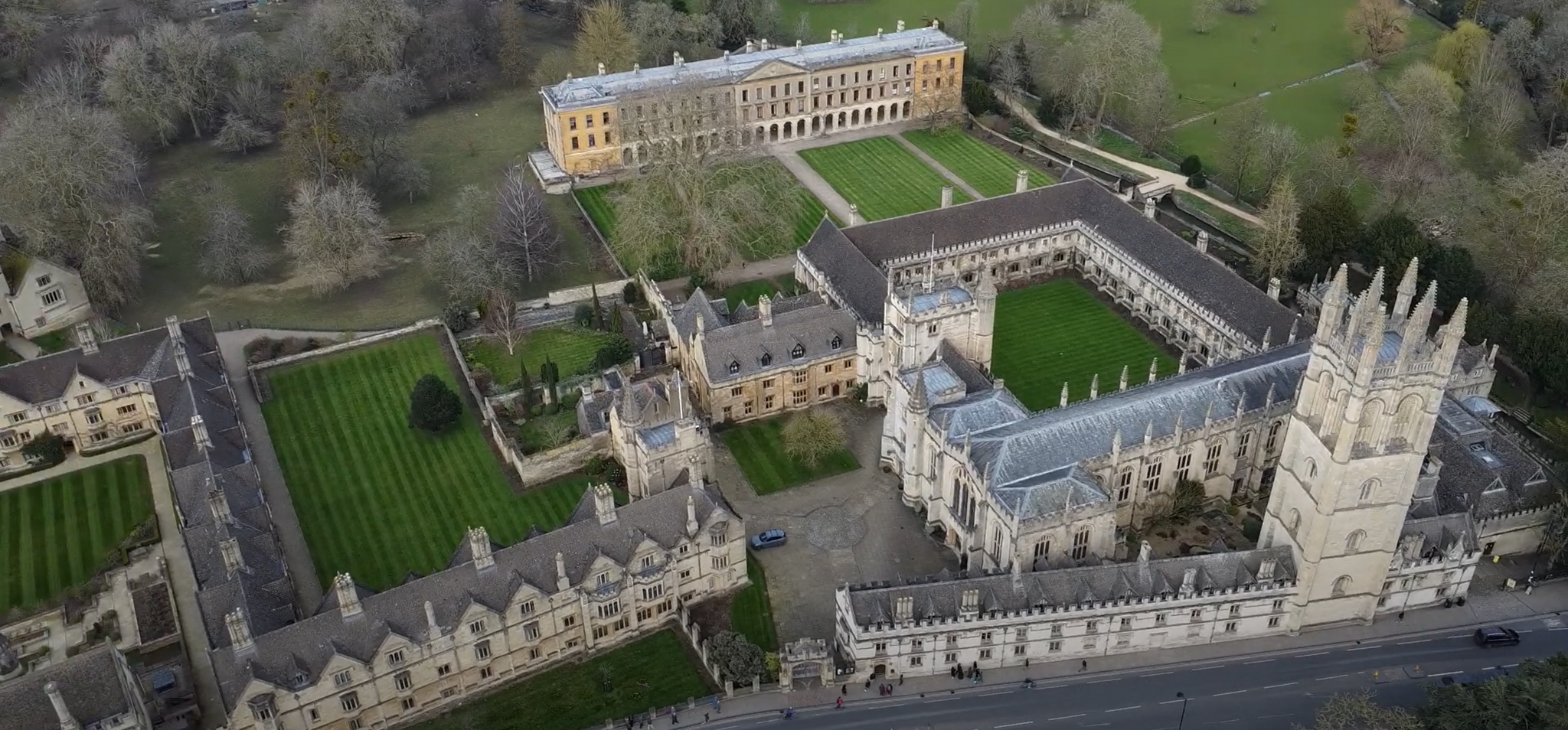
Magdalen (pronounced “Maudlin”) College Oxford feels like something out of a storybook. Founded in 1458, it's one of the city's oldest and most beautiful colleges.
One of the best parts is the deer park. A herd of fallow deer has lived here for centuries and is often seen grazing near Addison's Walk, a peaceful riverside path that circles the meadow. The calm mix of still water, rustling trees, and distant bell chimes makes it one of Oxford's most relaxing places.
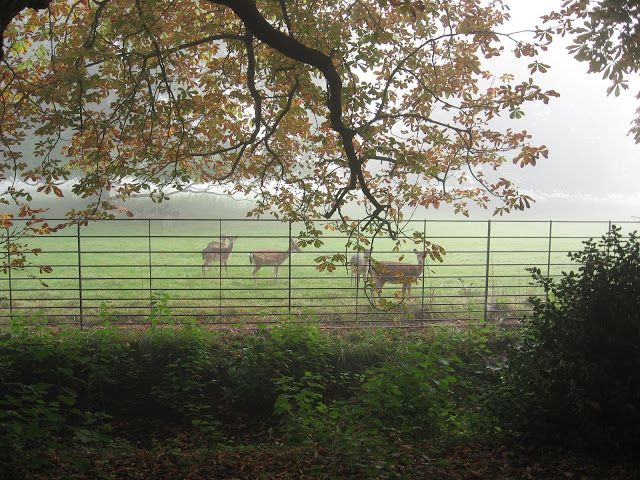
Magdalen College is open to visitors daily from early January to mid-December, but you'll need to pre-book your visit. An Oxford tour featuring Magdalen College is an ideal way to explore the college's history and its famous literary connections.
In case you didn't know, C.S. Lewis taught here for decades, and J.R.R. Tolkien often walked the nearby grounds. Both drew inspiration from this historic place.
Tip: One of the best times to visit Magdalen College is on May 1, when the college celebrates its traditional May Day festivities. At dawn, the college choir sings from the top of the Great Tower, filling the morning air with beautiful music as the sun rises over Oxford.
2. Explore the Museum of Natural History and the Pitt Rivers Museum
Among the best free museums in Oxford are two fascinating institutions that share the same building: the Oxford University Museum of Natural History and the Pitt Rivers Museum.
These museums offer completely different experiences, but together they make one of the most interesting stops on a hop-on, hop-off bus tour of Oxford. One focuses on the natural world, the other on human cultures across time and continents.
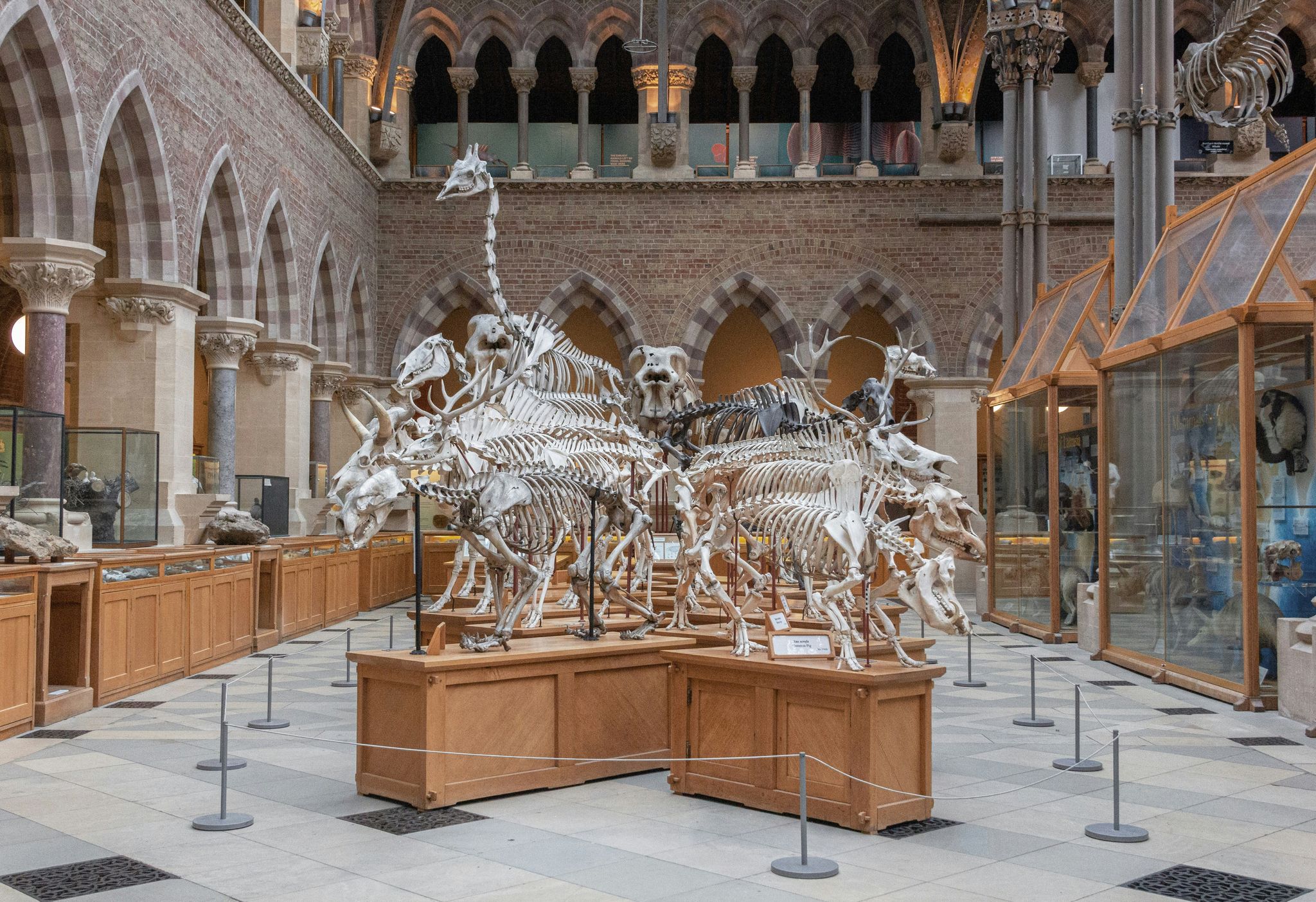
At the Natural History, you'll find giant prehistoric beasts, including the world's first scientifically described dinosaur, Megalosaurus, which was unearthed in nearby Oxfordshire. There's also a great display on evolution, including specimens that Charles Darwin himself handled.
Tucked behind the main gallery, the Pitt Rivers Museum is a completely different world. It has a darker, more mysterious atmosphere, with rows of wooden cabinets packed with thousands of cultural artifacts. What makes it unique is its arrangement: objects are grouped by use instead of origin.
That means ceremonial masks from Asia might sit beside those from Africa, or musical instruments from entirely different regions are displayed together. This layout invites you to look for patterns and ask your own questions. Look out for the shrunken heads. They are as creepy as they are fascinating.
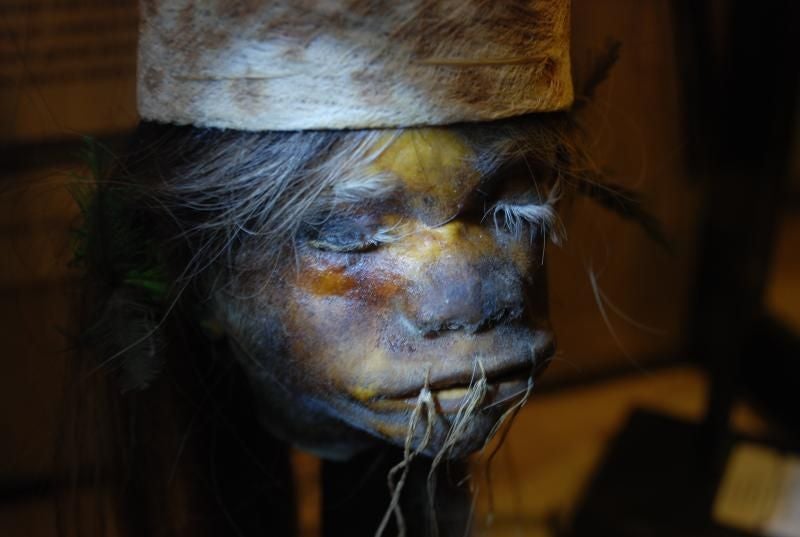
Image by Carlos Felipe Pardo, CC BY 2.0, Source.
Tip: If you're at the Pitt Rivers, take a moment to read the handwritten labels tucked among the displays. They often reveal quirky facts or unexpected backstories.
1. Tour the Historic University Colleges
Exploring Oxford's historic colleges is at the heart of any visit. These stunning buildings aren't just for students. They're living museums filled with centuries of history, architecture, and secret stories.
Guided tours offer you a chance to wander through ancient chapels, beautiful gardens, and grand dining halls where famous thinkers once dined. An Oxford tour with a visit to Christ Church is especially popular thanks to its magnificent dining hall that inspired the Great Hall in the Harry Potter films.
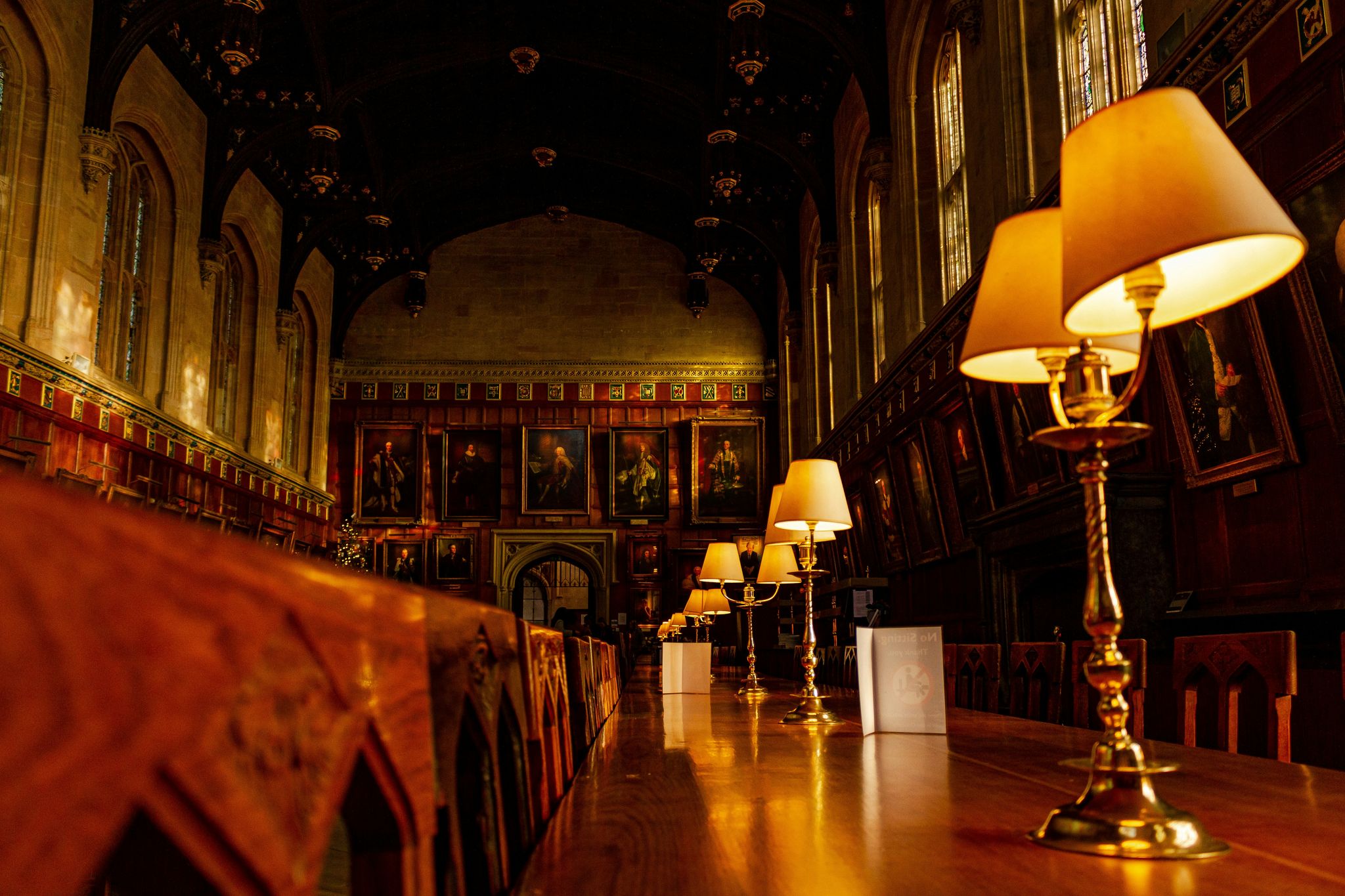
A Harry Potter film locations tour in Christ Church lets you follow in the footsteps of Hogwarts students and experience the magic firsthand. But beyond Christ Church, there are many other colleges worth discovering, each offering a glimpse into centuries of academic tradition and student life.
New College is one of the oldest in Oxford and offers a peaceful escape with its quiet gardens and medieval architecture. Its cloisters and ancient walls even appeared in the Harry Potter films, which makes it a highlight of many movie tours in Oxford.
Balliol College is another gem, known for its historic quad and long academic legacy. Several British prime ministers studied here, and you can still feel that weight of tradition when walking through its gates.
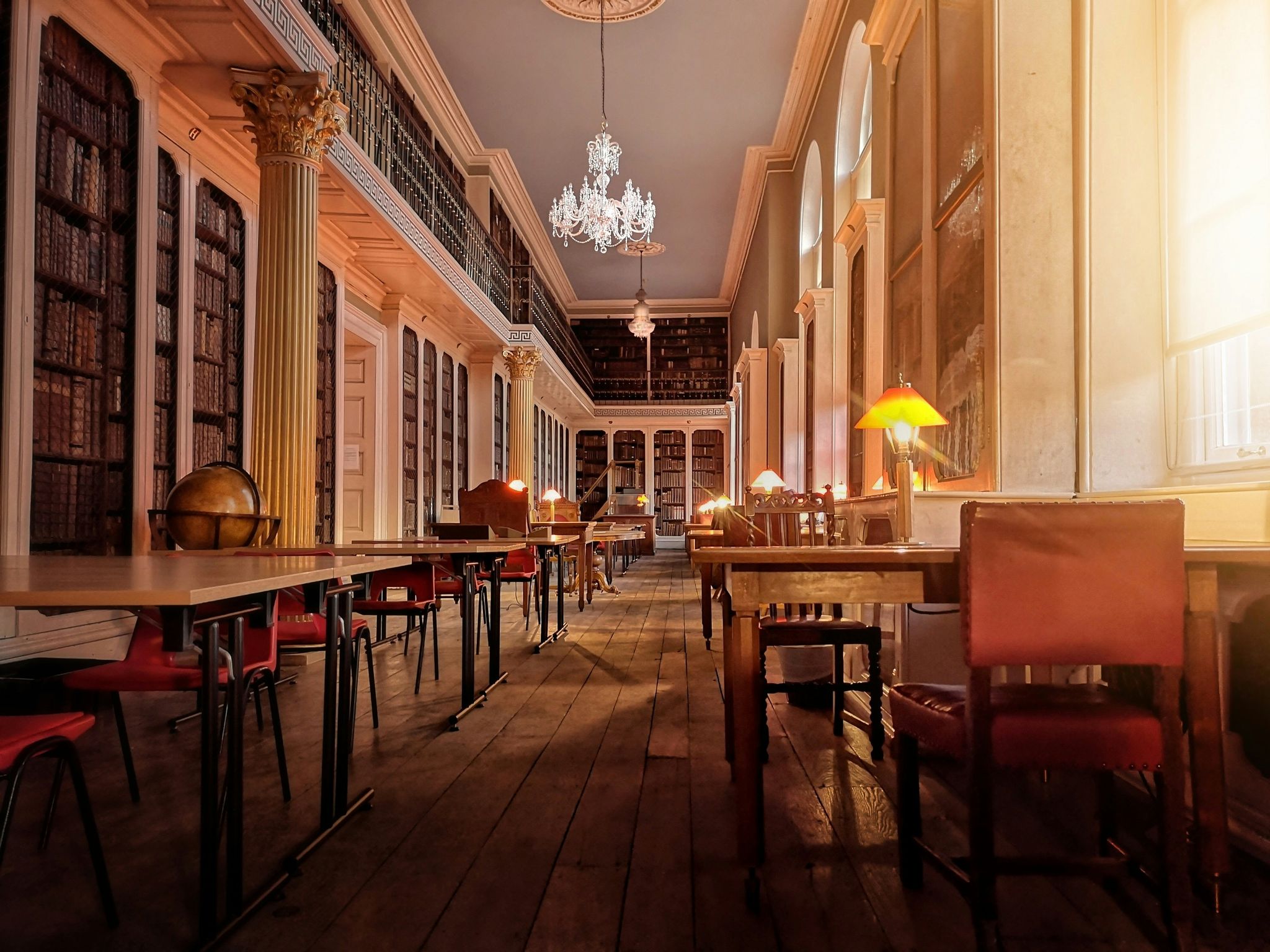
Other colleges worth visiting in Oxford include St John's, Worcester, and Somerville Colleges. Visiting these lesser-known colleges gives you a more complete feel for the university, especially if you're looking to go beyond a classic Oxford walking tour.
St John's has a quiet, almost hidden feel with leafy gardens and elegant quads that seem far from the busy streets outside. Worcester College often surprises visitors with its tranquil lake and sprawling lawns. It's one of the prettiest spots in the city and is usually much less crowded than the more famous colleges.
Somerville has its own place in history as one of the first Oxford colleges founded specifically for women. It also produced some impressive alumni, including Margaret Thatcher.
Tip: For something more offbeat, try visiting during one of the college evensongs. Many colleges like Magdalen or New College open their chapels for free evening choral services. You don't need to be religious to attend; just sit quietly and take in the music. It's one of the most atmospheric ways to experience Oxford without the crowds.
FAQs About Visiting Oxford
Here are key things to keep in mind before you set foot in the city of dreaming spires.
When is the best time to visit Oxford?
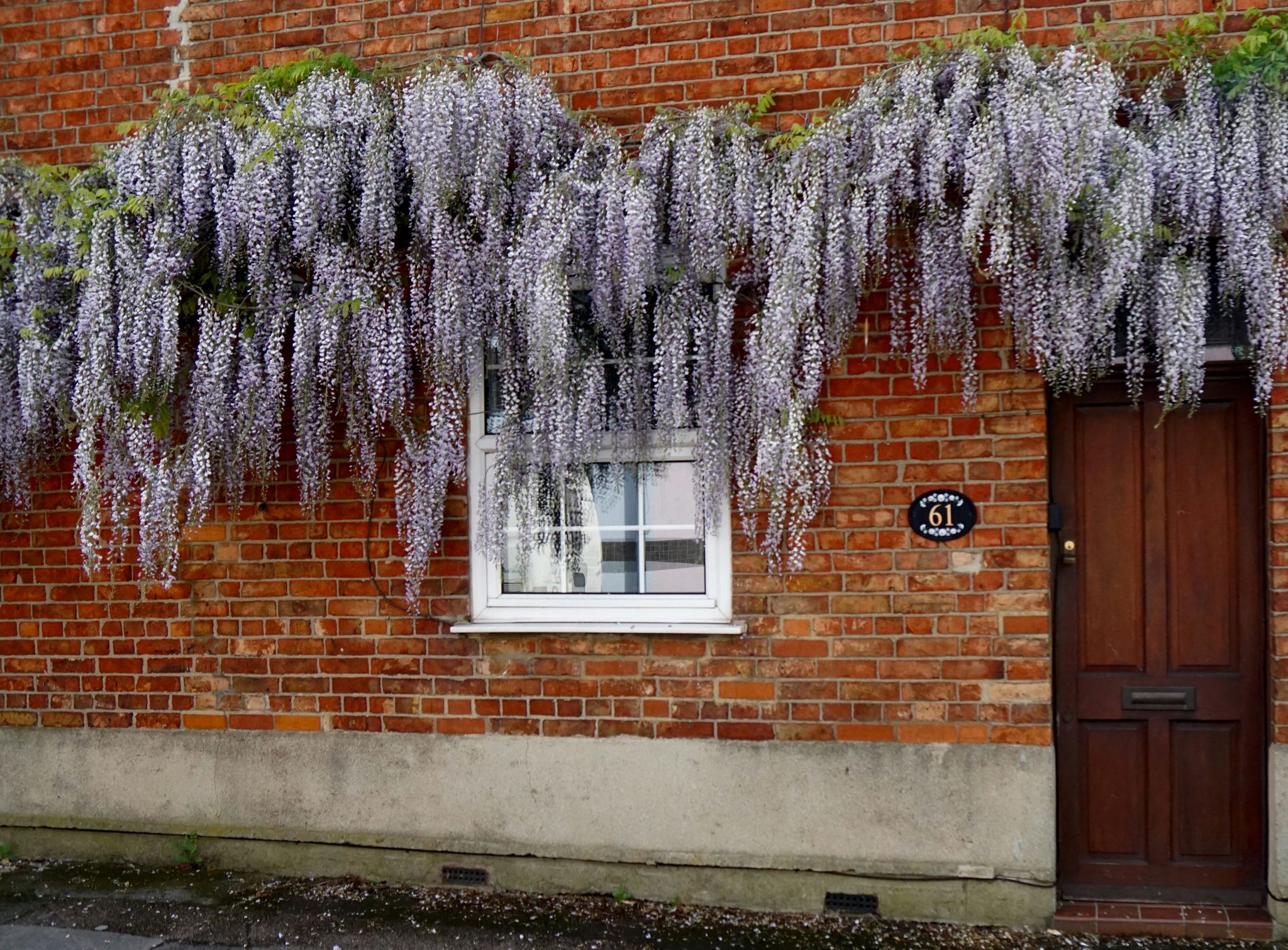
The best time to visit Oxford is between May and September, when the weather is warm and the city comes alive with events and outdoor activities. This period includes the university's quieter term breaks, making popular attractions more accessible.
Spring and summer also allow for punting, garden strolls, and visiting college quads when they're in full bloom. For fewer crowds and autumn color, October offers a picturesque shoulder season. Visiting during these months guarantees a richer and more enjoyable Oxford experience.
What are the best things to do in Oxford for first-time visitors?
The best things to do in Oxford for first-time visitors include exploring the University of Oxford's historic colleges, punting on the River Cherwell, and visiting the Bodleian Library. These experiences capture the city's academic legacy, riverside charm, and literary pedigree.
You can also browse the Ashmolean Museum's world-class exhibits and take a walking tour of filming locations from “Harry Potter” and “Inspector Morse." These highlights offer a quintessential Oxford experience no first-time visitor should miss.
Are Oxford's university colleges open to visitors?
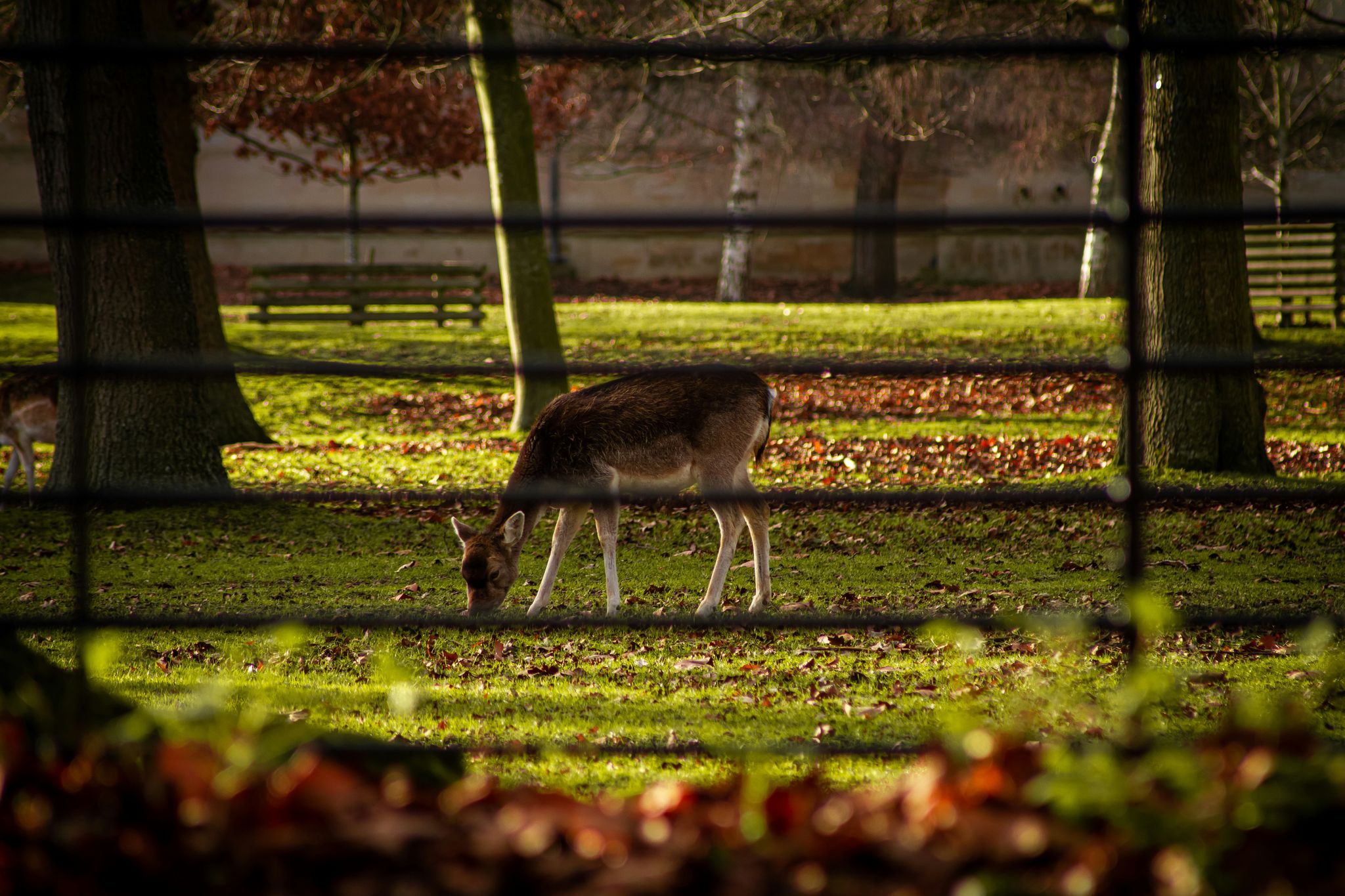
Many of Oxford's university colleges are open to visitors. Famous colleges like Christ Church, Magdalen, and New College offer regular public access. Lesser-known but equally beautiful colleges, including Exeter, Keble, and Corpus Christi, provide quieter and often cheaper alternatives. Visiting a mix of renowned and hidden colleges gives a fuller picture of Oxford's architectural and academic legacy.
Can I visit the Bodleian Library without being a student?
Yes, you can visit the Bodleian Library even if you're not a student, as it offers guided tours and public exhibitions. Visitors can tour the Divinity School, Duke Humfrey's Library, and exhibition rooms without needing university affiliation.
Is the Ashmolean Museum free to enter?
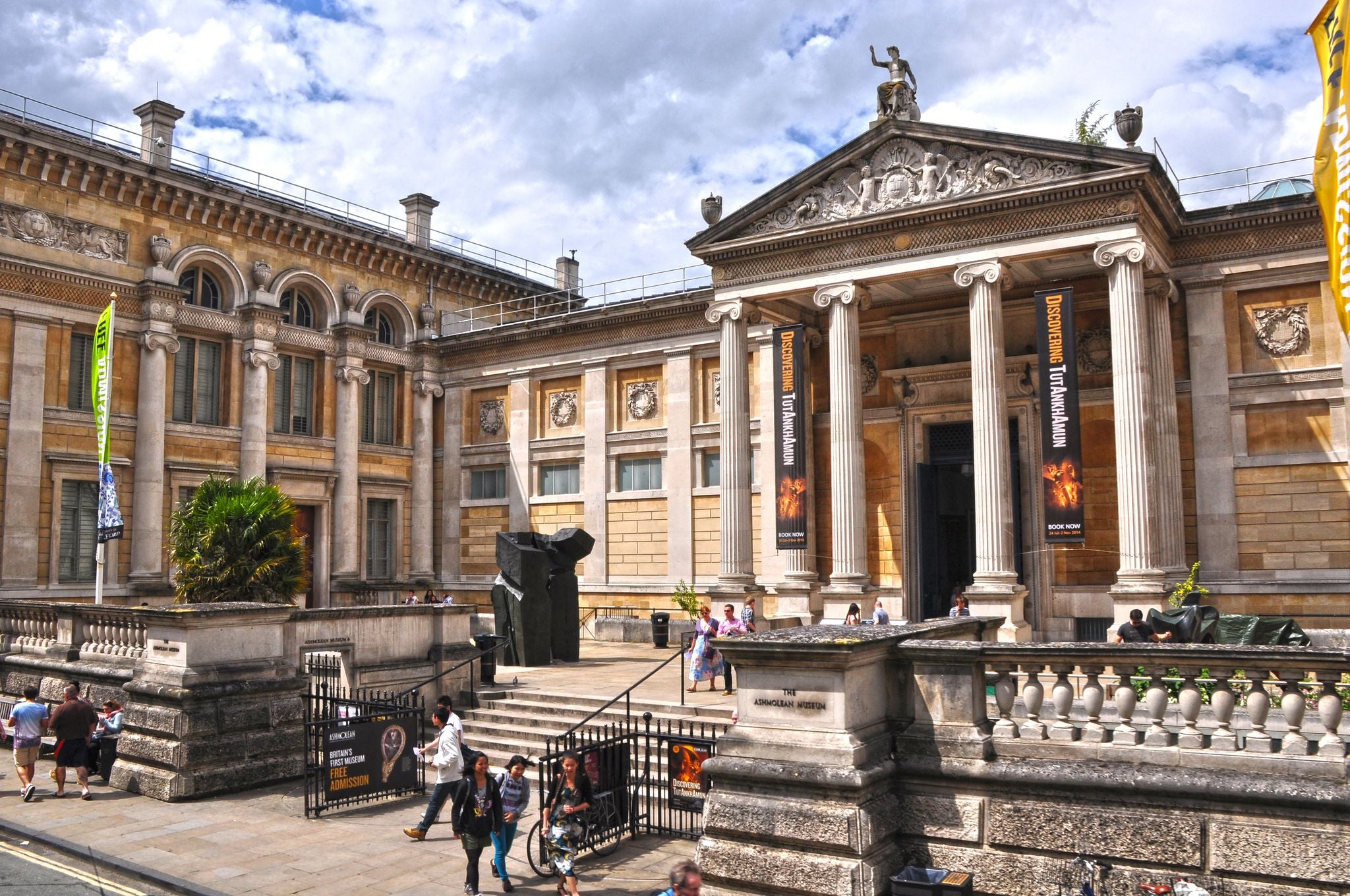
Yes, the Ashmolean Museum is free to enter, offering access to one of the UK's most impressive collections of art and archaeology. Founded in 1683, it houses everything from Egyptian mummies to Pre-Raphaelite paintings.
Other free museums in Oxford include the Pitt Rivers Museum, the Museum of the History of Science, and the Oxford University Museum of Natural History.
Is punting in Oxford safe for beginners?
Punting in Oxford is generally safe for beginners, especially when choosing a chauffeured punt or punting with guidance. The flat-bottomed boats are stable, and the river's slow current makes it ideal for novices.
You can rent punts with trained guides at Magdalen Bridge or Cherwell Boathouse, or try self-hire if you're up for the challenge. Staff often provide basic instructions before departure.
Where can I find traditional Oxford food?
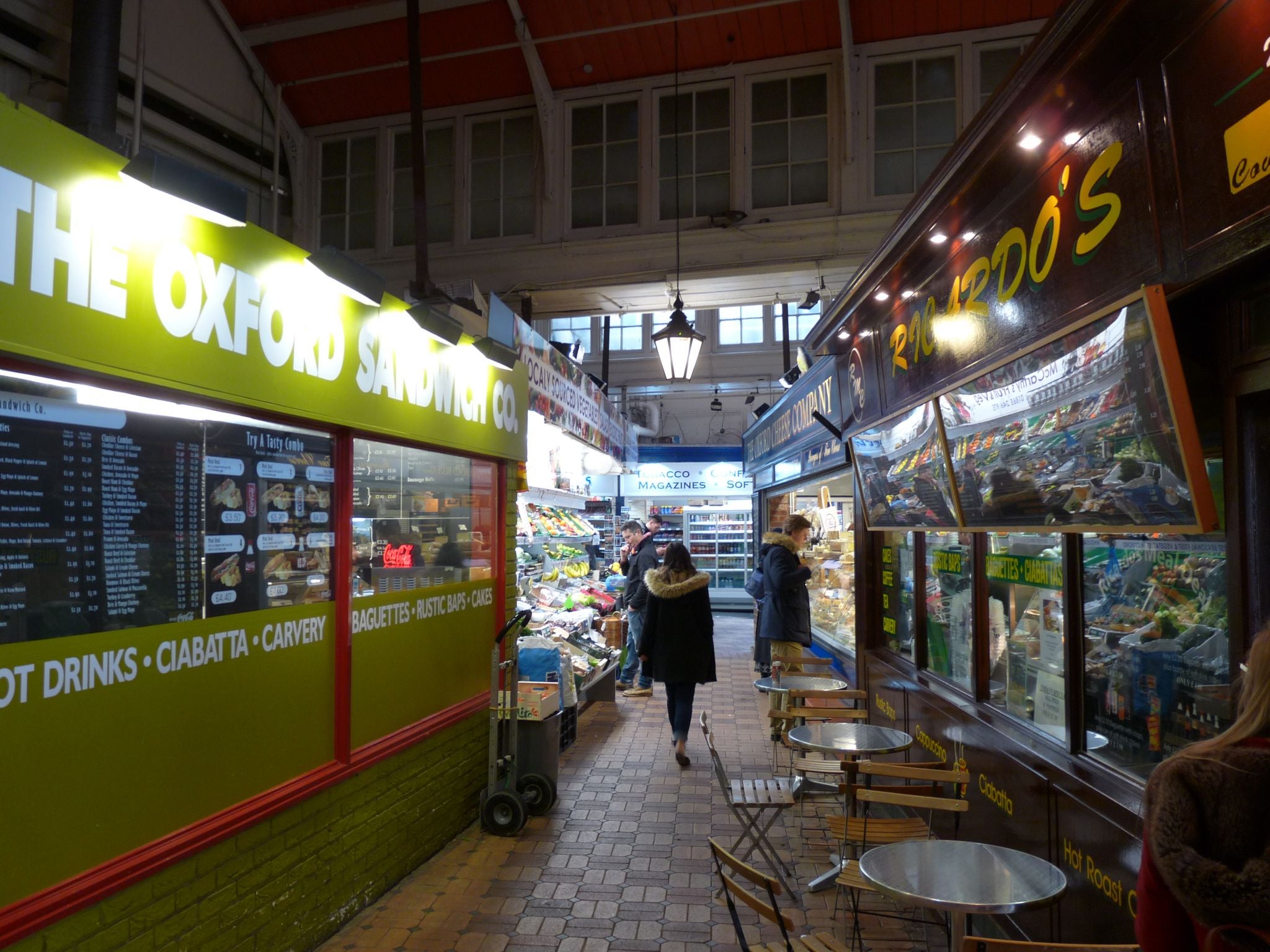
You can find traditional Oxford food at the Covered Market. It's the best place to sample classics like sausage rolls, meat pies, and traditional English breakfasts in a setting locals have loved for centuries. For a sit-down meal with literary flair, visit The Eagle and Child, the pub where Tolkien and C.S. Lewis once met. It serves classic pub fare and local ales.
What are some unique things to do in Oxford?
The top unique things to do in Oxford include a ghost tour, a river cruise, a private admissions tour, and a historic fortress visit. These activities offer deeper connections with Oxford's distinctive history, culture, and academic life.
You can visit Oxford's most haunted locations, exploring eerie legends and haunted college corridors. For a more relaxing experience, take an afternoon tea and sightseeing river cruise along the Thames.
History lovers will enjoy a tour of the Oxford Castle and prison, a medieval fortress with a fascinating past as both a royal residence and a prison. Meanwhile, prospective students and their families can join a private group tour focused on Oxford University admissions, packed with useful advice and insider tips about the application process.
What are some hidden gems in Oxford locals recommend?
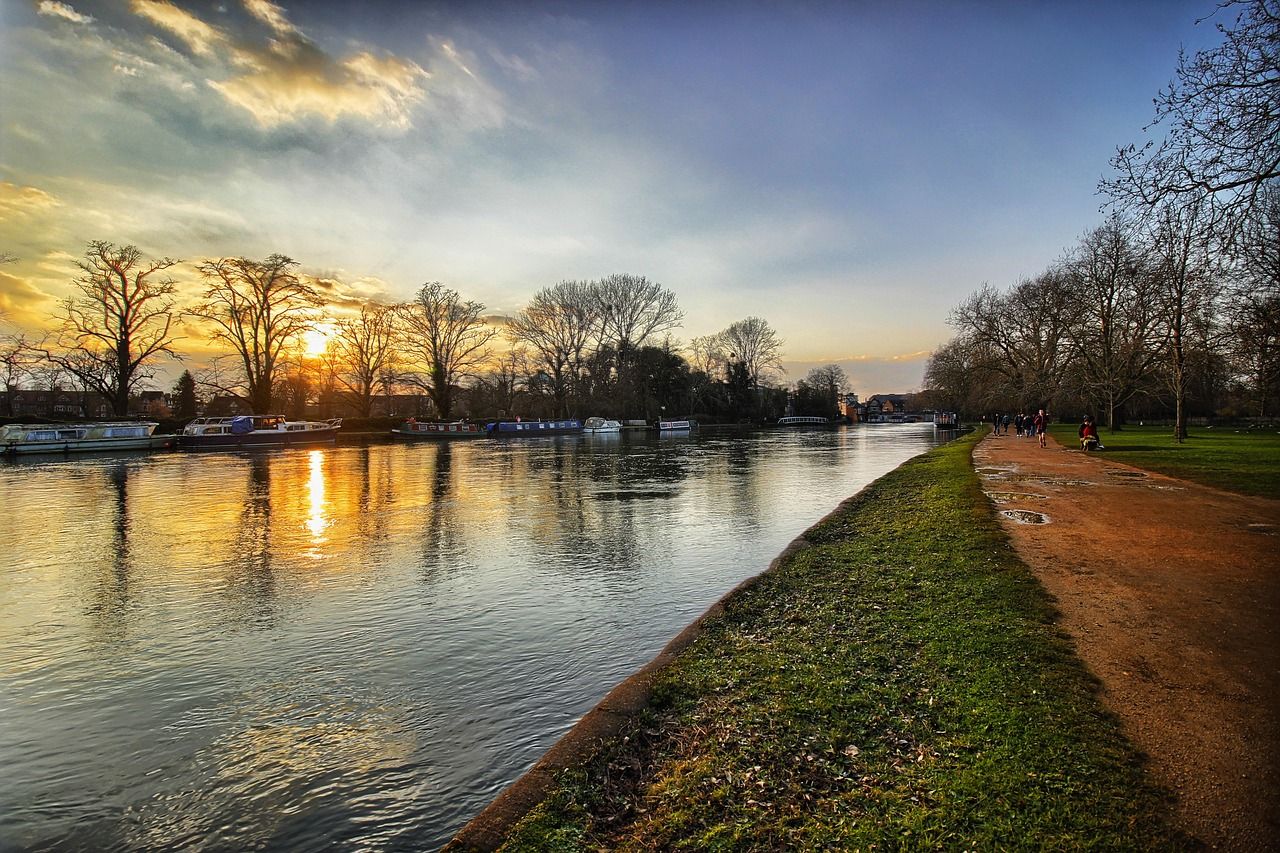
Some hidden gems Oxford locals recommend include the Oxford Botanic Garden, the oldest in the UK, and the quiet paths of Mesopotamia Walk by the river. Another secret spot is the Painted Room above the Covered Market, which hides Tudor wall paintings once admired by Shakespeare.
For books and coffee, the Albion Beatnik Bookstore offers a quirky retreat off the tourist trail. Jericho, just north of the city center, is full of indie shops and tucked-away pubs. Exploring these under-the-radar spots reveals a more intimate and authentic Oxford.
What are the best places to visit near Oxford?
The best places to visit near Oxford include Blenheim Palace, the Cotswolds, and Bicester Village. These nearby spots make excellent additions to an Oxford itinerary and show off Oxfordshire's variety beyond the city limits.
Visit Blenheim Palace, a UNESCO World Heritage Site and Winston Churchill's birthplace, to enjoy grand state rooms and expansive gardens. Take a private day trip to the Cotswolds to discover postcard-perfect villages, cozy pubs, and independent shops. For a designer shopping experience, head to Bicester Village, home to luxury brands at outlet prices.
Can I visit Oxford on a day trip from London?
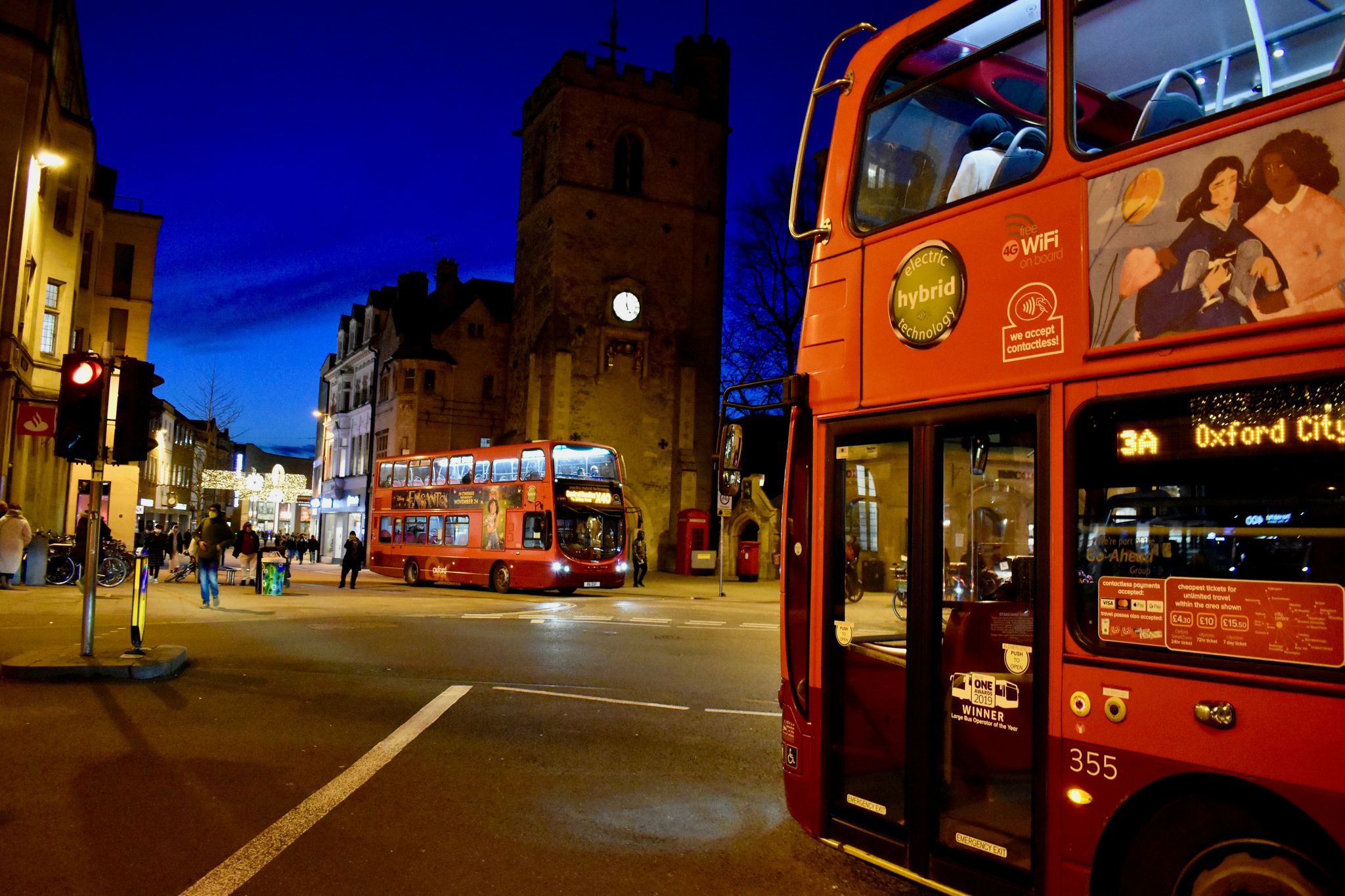
Yes, you can visit Oxford on a day trip from London, as it's only about an hour away by train or around 90 minutes by bus. Trains depart regularly from Paddington Station and arrive at Oxford's central station, just a short walk from major attractions.
While a day allows time for key sights like Christ Church, the Bodleian, and a museum or two, staying overnight gives you more time to explore. With efficient transport links and compact geography, Oxford is one of the easiest and most rewarding day trips from London.
Before You Go: Oxford in Summary
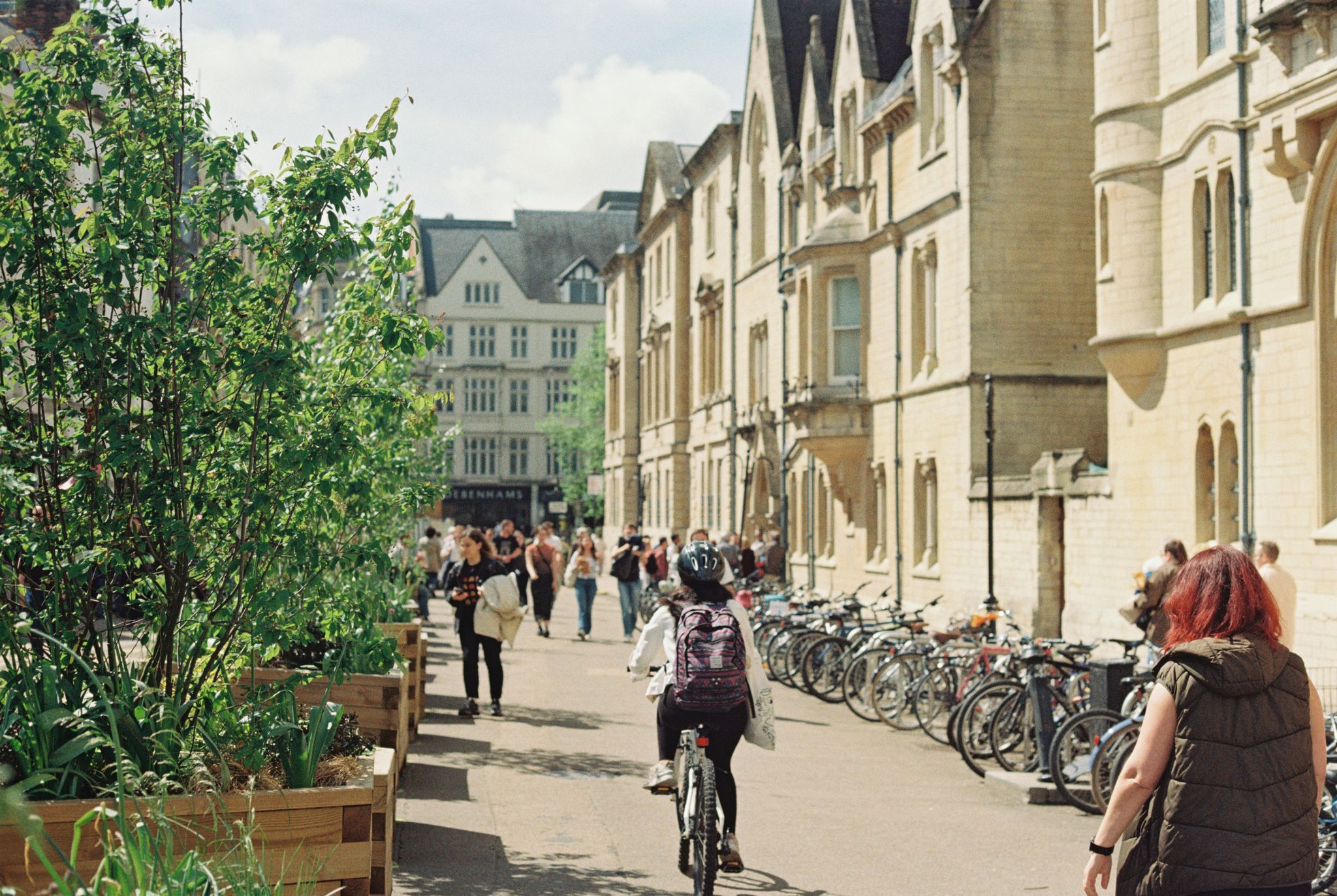
Oxford may wear its academic robes well, but it's the quirks beneath the collar that make the city unforgettable. From ancient meadows where cows have right of way to hidden graffiti and ghost tours after dark, the best things to do in Oxford blend centuries of tradition with unexpected delight.
This isn't just a city of lectures and libraries; it's a place where punts drift by Tolkien's old haunts, where every alley has a story, and where you're just as likely to spot a falcon on a college crest as you are a falafel van outside a chapel.
Take your time. Explore on foot. Follow curiosity. Because in Oxford, the real magic happens between the guidebook pages.
Even magic needs planning. Before you pack, explore the best places to stay in Oxford to find your perfect base. Then, follow our top itineraries in Oxford to experience the city's highlights and hidden gems.
